Haiyore! Nyaruko-san W Episode 8 References
"A long long time ago" (0:01)
The Japanese line is "Mukaashi mukashi" (むかーしむかし). This is referencing the narration at the beginnings of several episodes of "Ookami-san to Shichinin no Nakama-tachi" (オオカミさんと七人の仲間たち), "Ookami and her Seven Companions", an anime series that aired in 2010.S1 The original line goes, "Mukaashi mukashi" (むかーしむかし), which has the same meaning as above. The connection is that the person who voices the narrator in this series, Arai Satomi (新井里美), also voices Shantakkun.
"A girl with a scary look in her eyes and a weak boy who can't deal with being stared at won't appear in this story, so please don't misunderstand." (0:24)
This line is referencing two of the main characters in "Ookami-san to Shichinin no Nakama-tachi" (オオカミさんと七人の仲間たち), "Ookami and her Seven Companions".S1
* The phrase "me tsuki no warui onago" (目つきの悪い女子), "a girl with a scary look in her eyes", is referencing Ookami Ryouko (大神涼子). In episode 1 of the series, the narrator introduces her by saying, "Kono me tsuki no warui onna no ko ha Ookami Ryouko" (この目つきの悪い女の子は大神涼子), which translates to "This girl with a scary look in her eyes in Ookami Ryouko".
* The phrase "hito no shisen ga nigate na hetare danshi" (人の視線が苦手なヘタレ男子), "a weak boy who can't deal with being stared at", is describing Morino Ryoushi (森野亮士).
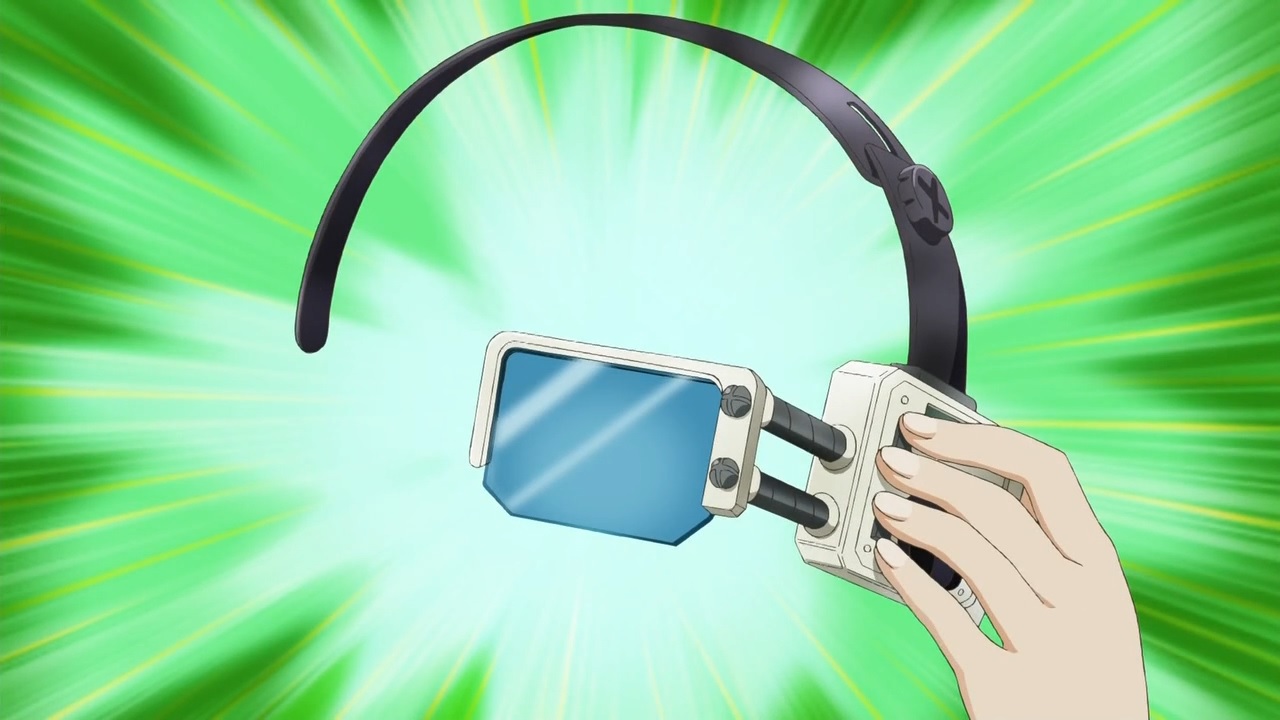

(1:23)
There are two references here:
* This device is referencing "Dragon Ball" (ドラゴンボール), a manga series written by Toriyama Akira (鳥山明) and published from 1984 to 1995. In the series, there exists a device called a "Scouter" (スカウター) which is worn over the ear and eye. The device is able to calculate how powerful an individual is and display this data on the lens that covers the eye. Image for reference:
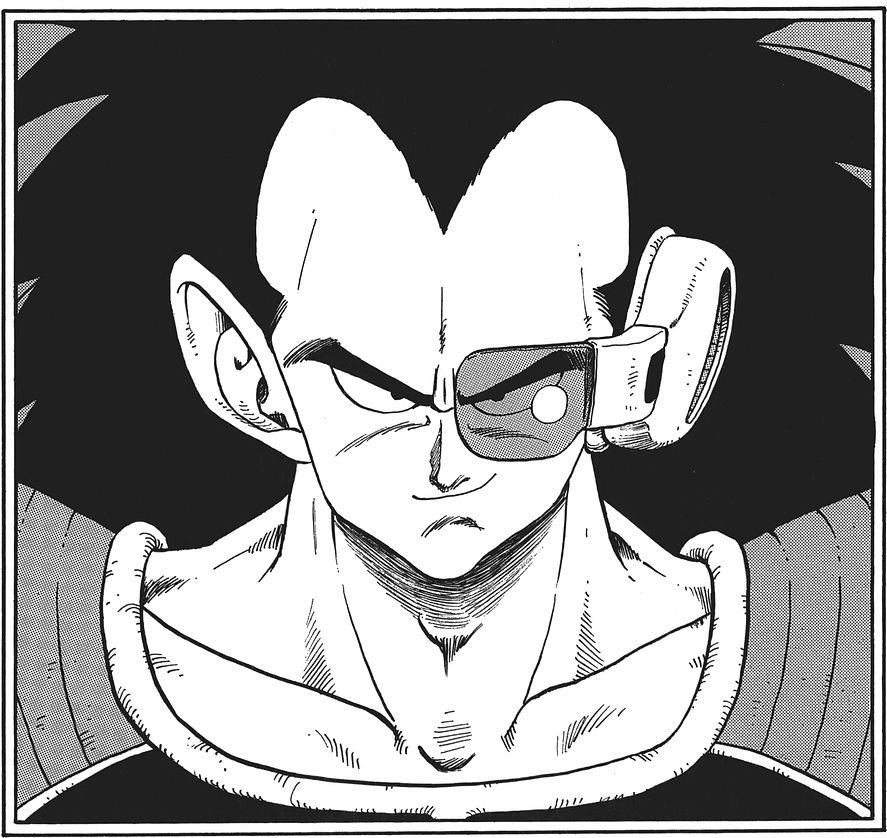
* The manner in which Cthuko reveals this device is referencing Doraemon from "Doraemon" (ドラえもん), a manga series written by Fujiko F. Fujio (藤子・F・不二雄) and published from 1969 to 1996. When Doraemon first introduces a gadget, often he will hold it up and say the name of the gadget, and the background will be drawn with an emphasizing effect. Image for reference:
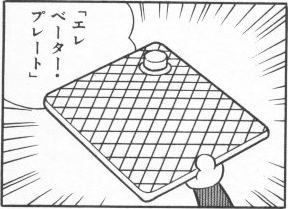
In anime adaptations of "Doraemon", typically a musical chime sound effect will be played when Doraemon introduces the gadget.
"The Translating Contact Lens of Delirious Nausea and Ecstatic Frenzy." (1:27)
The phrase "me mo kuramu hakike to bouga no kyouran" (目も眩む吐き気と忘我の狂乱), "delirious nausea and ecstatic frenzy", is quoting a sentence in "The Dream-Quest of Unknown Kadath", a story written by H. P. Lovecraft and first published in 1943.S2 The sentence goes, "Of the length of that hideous sliding he could never be sure, but it seemed to take hours of delirious nausea and ecstatic frenzy."

"Oh lost shantak bird, speak." (1:36)
The Japanese line is "Mayoeru shantaku chou yo, hanashinasai" (迷えるシャンタク鳥よ、話しなさい). This is referencing "Oretachi Hyoukin Zoku" (オレたちひょうきん族), "We are the Funny Family", a Japanese comedy variety show that aired from 1981 to 1989.S2 In the show there was a segment called "Hyoukin Zangeshitsu" (ひょうきん懺悔室), "Funny Confession Room", which featured people giving humorous confessions of having messed up during recordings. Generally before each confession, a person acting as a priest would usher in the next person to confess by saying "Tsumibukaki, mayoeru koshitsuji yo, hairinasai" (罪深き、迷える子羊よ、入りなさい), which translates to "Oh sinful lost lamb, enter". In addition, there is a square design on the wall behind Cthuko. This is referencing the same square design that appears in this segment.
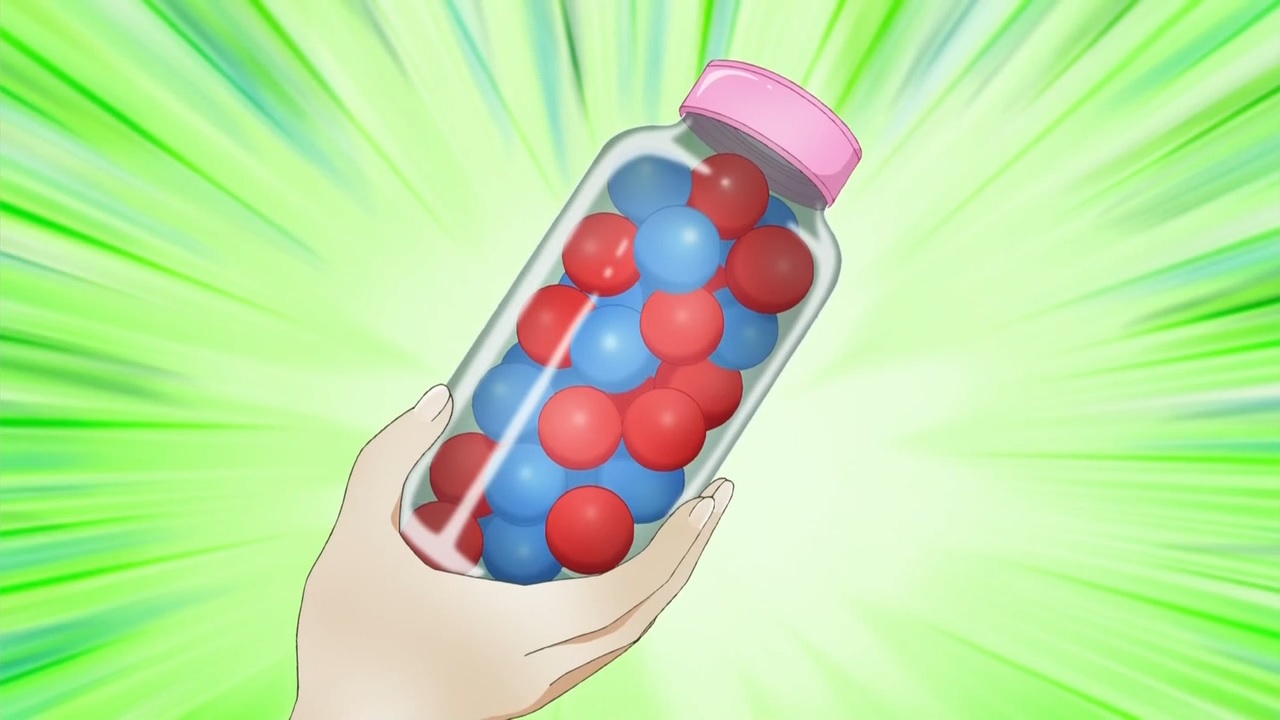
(1:54)
"Fushigi na kyandii" (ふしぎなキャンディー), "mysterious candy", is referencing "Fushigi na Merumo" (ふしぎなメルモ), "Mysterious Merumo", a manga series written by Tezuka Osamu (手塚治虫) and published from 1970 to 1972.S1 In the series, the main character, Merumo (メルモ), possess a jar of candy called "Mirakuru Kyandii" (ミラクルキャンディー), "Miracle Candy". The candy comes in two types, blue and red. The blue candy has the ability to increase the eater's age by 10 years. The red candy has the ability to decrease the eater's age by 10 years.
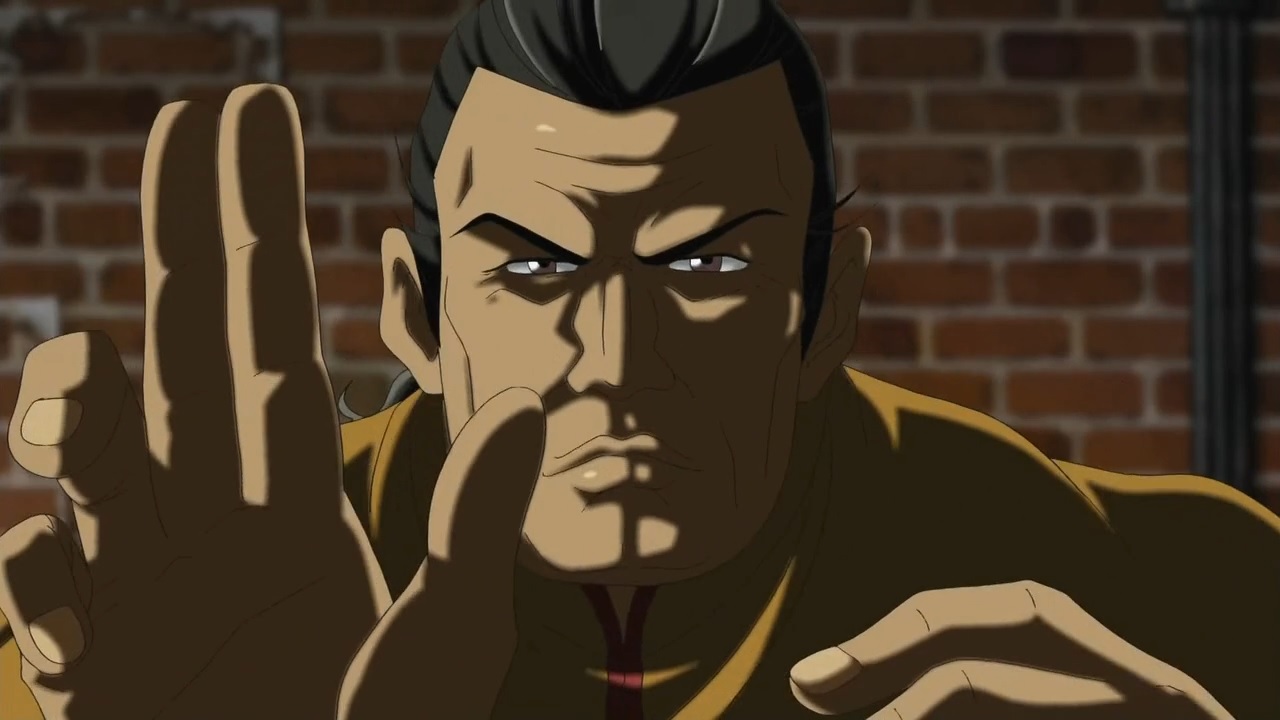
(2:16)
The man in the action movie Mahiro is watching greatly resembles Steven Seagal, an American actor who has been the lead role in many action films.S2 Image for reference:

Source of image: https://en.wikipedia.org/wiki/File:Steven_seagalpa.jpg
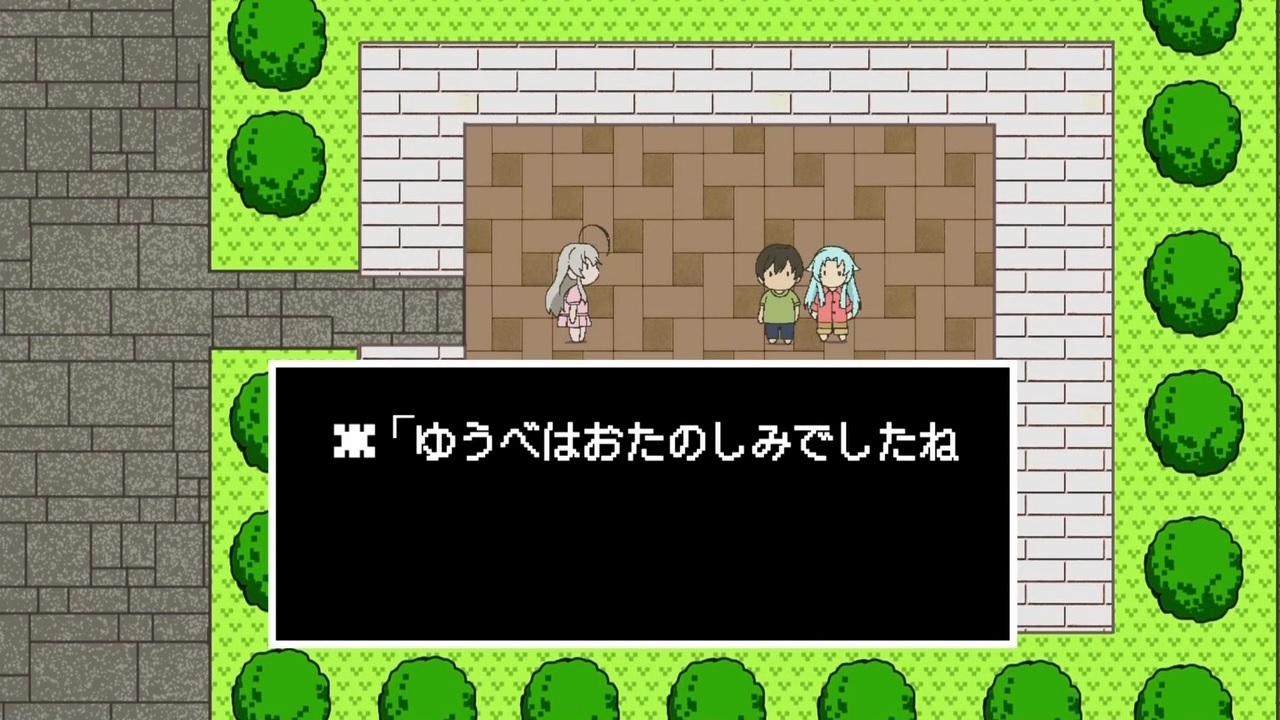
(5:14)
The text says "Yuube ha otanoshimi deshita ne" (ゆうべはおたのしみでしたね), which translates to "Last night was fun, huh?". This is referencing "Dragon Quest" (ドラゴンクエスト), a video game first released in 1986.S2 After rescuing the princess, the hero must then bring her back to her castle. If the hero rests at an inn while the princess is still with him, then the next morning the inn keeper will say, "Ohayou gozaimasu. Yuube ha otanoshimi deshita ne." (おはようございます。ゆうべは おたのしみでしたね。), which translates to "Good morning. Last night was fun, huh?". Image for reference:
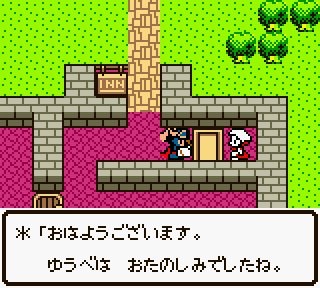
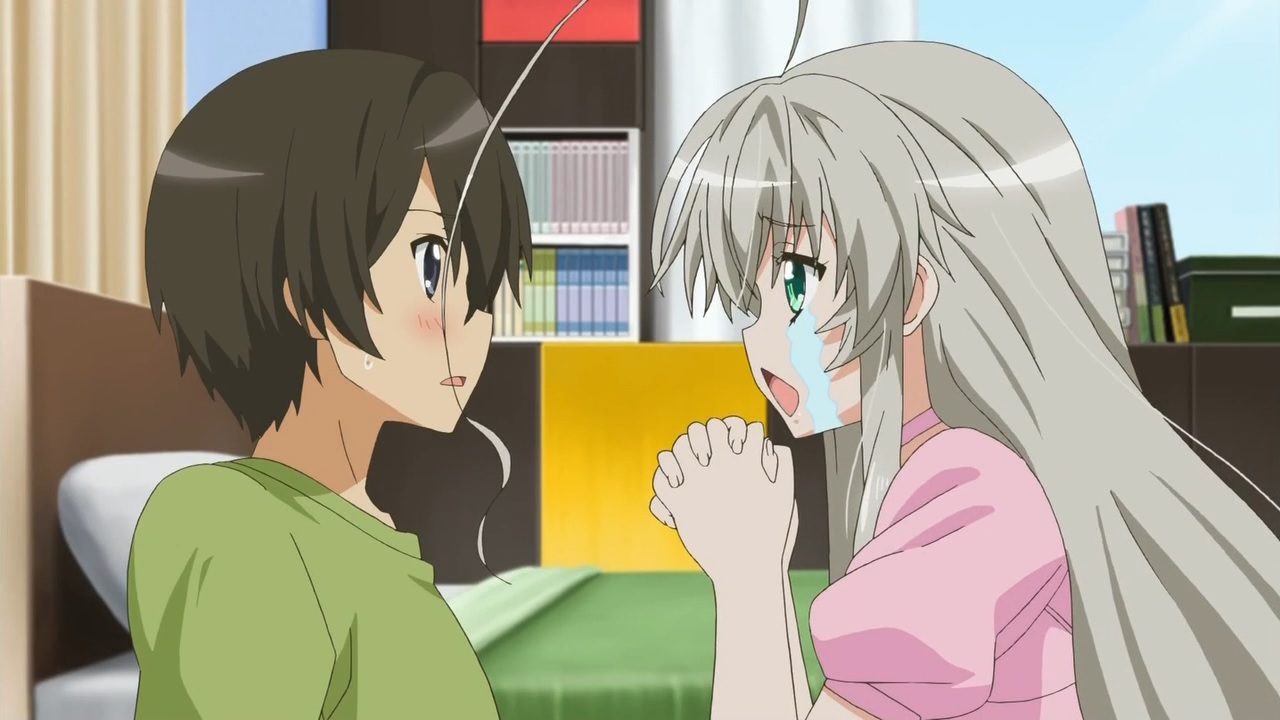
"Do you remember love?" (5:25)
The Japanese line is "Ai, oboetemasu ka?" (愛、おぼえてますか?). This is referencing "Chou Jikuu Yousai Makurosu Ai Oboeteimsu Ka" (超時空要塞マクロス 愛・おぼえていますか), "The Super Dimension Fortress Macross: Do You Remember Love?", a movie released in 1984. In addition, the theme song of this movie also titled "Ai Oboeteimasu ka" (愛・おぼえていますか). This song was sung by Iijima Mari (飯島真理) and released in 1984.
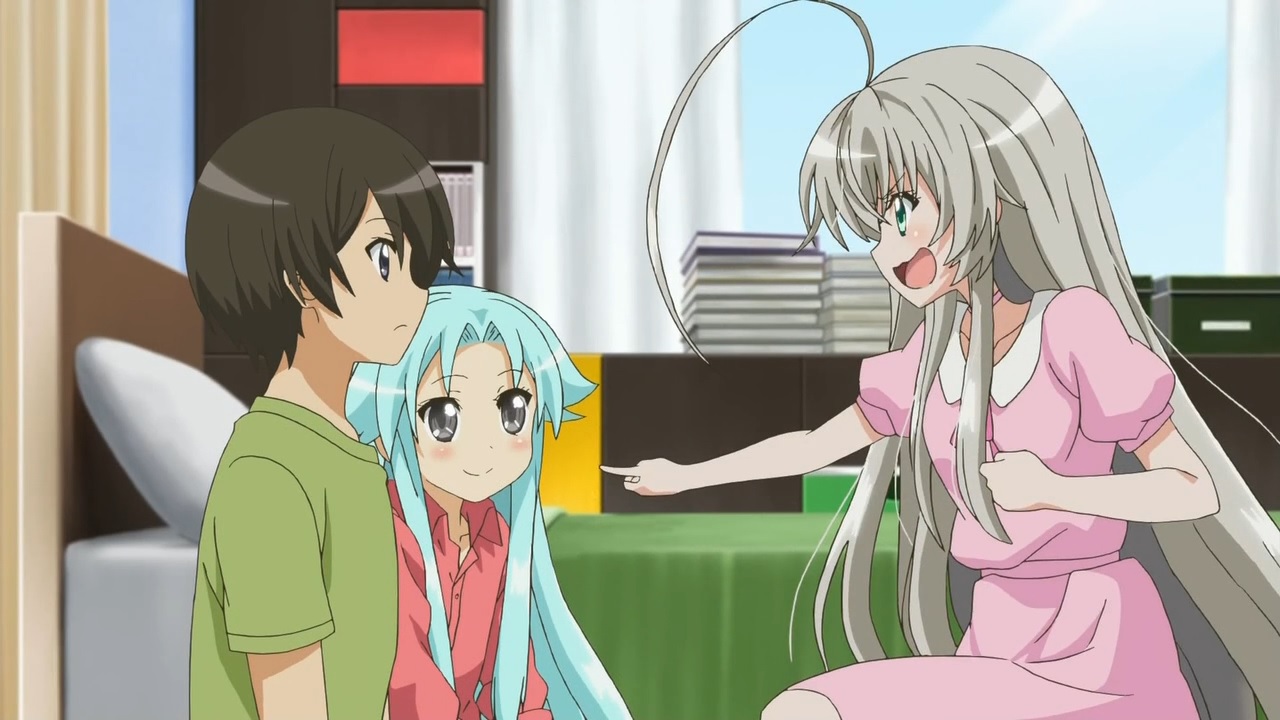
"There's no way my pet could be such a little girl!" (5:48)
The Japanese line is "Watashi no petto ga, konna ni youjo na wake ga arimasen!" (私のペットが、こんなに幼女なわけがありません!). This is referencing "Ore no Imouto ga Konna ni Kawaii Wake ga Nai" (俺の妹がこんなに可愛いわけがない), "My Little Sister Can't Be This Cute", a light novel series written by Fushimi Tsukasa (伏見つかさ) and published from 2008 to 2013.
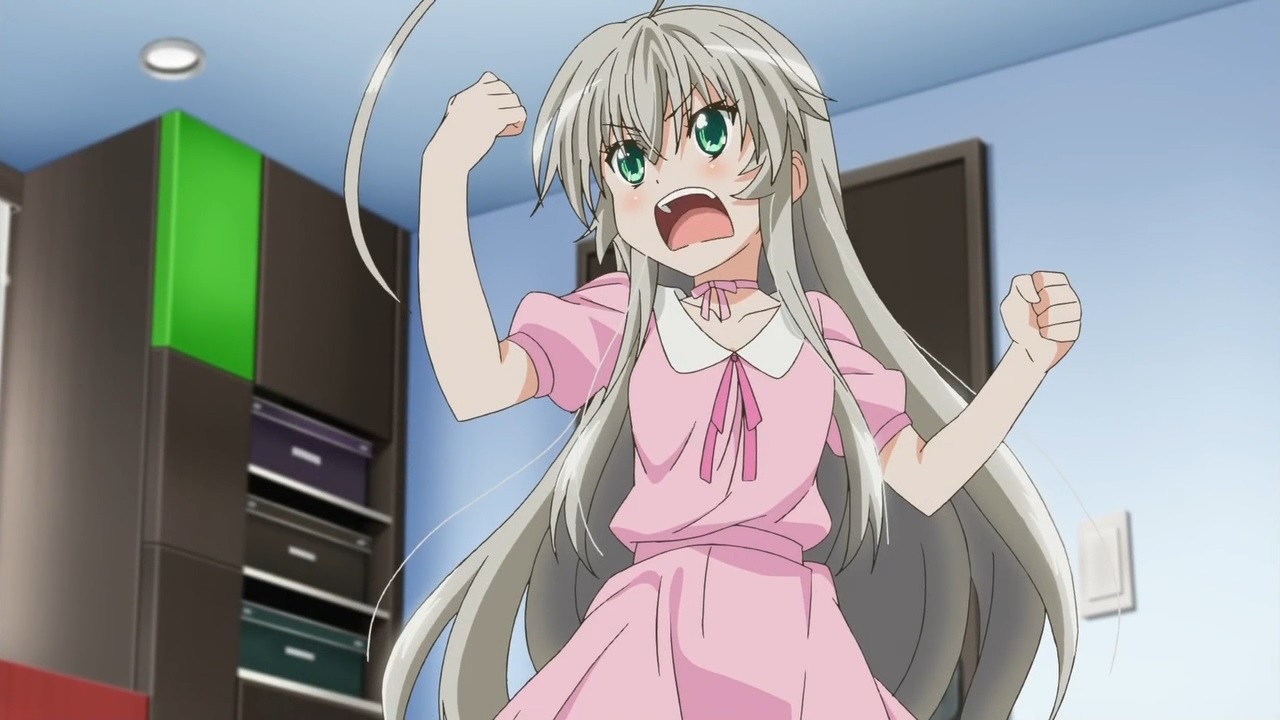
"Shine! I absolutely won't give up my dream or Mahiro!" (5:57)
The Japanese line is "Kagayake, watashi! Yume to Mahiro-san ha zettai ni watashimasen!" (輝け、私!夢と真尋さんは絶対に渡しません!). This is referencing lines in the lyrics to "Kagayake!! Daguon" (輝け!!ダグオン), "Shine!! Dagwon", a song sung by Nieve and released in 1996. This song is the opening theme song for "Yuusha Shirei Daguon" (勇者指令ダグオン), "Brave Command Dagwon", an anime series that aired from 1996 to 1997.S2 The original lines go as follows:
「ダグオン 輝け!!ダグオン」
「夢は絶対渡さない」
"Daguon Kagayake!! Daguon"
"Yume ha zettai watasanai"
"Dagwon Shine!! Dagwon"
"We absolutely won't give up our dream"
"I won't lose to anyone. In the whole universe, I love you the most, most, most!" (6:10)
The Japanese line is "Dare ni mo makemasen. Anata wo uchuu de ichiban, ichiban, ichiban, a i shi te masu!" (誰にも負けません。貴方を宇宙で一番、一番、一番、あ・い・し・て・ます!). This is referencing a line in the lyrics to "Catch You Catch Me", a song sung by Gumi (グミ) and released in 1998. This song is the first opening theme song for "Cardcaptor Sakura" (カードキャプターさくら), an anime series that aired from 1998 to 2000.S2 The original line goes, "Dare ni mo makenai anata ni sekai de ichiban ichiban ichiban ichiban ko i shi te ru" (誰にも負けない あなたに世界で一番一番一番一番 コ・イ・シ・テ・ル), which translates to "I won't lose to anyone. In the whole world, I love you the most, most, most, most!".
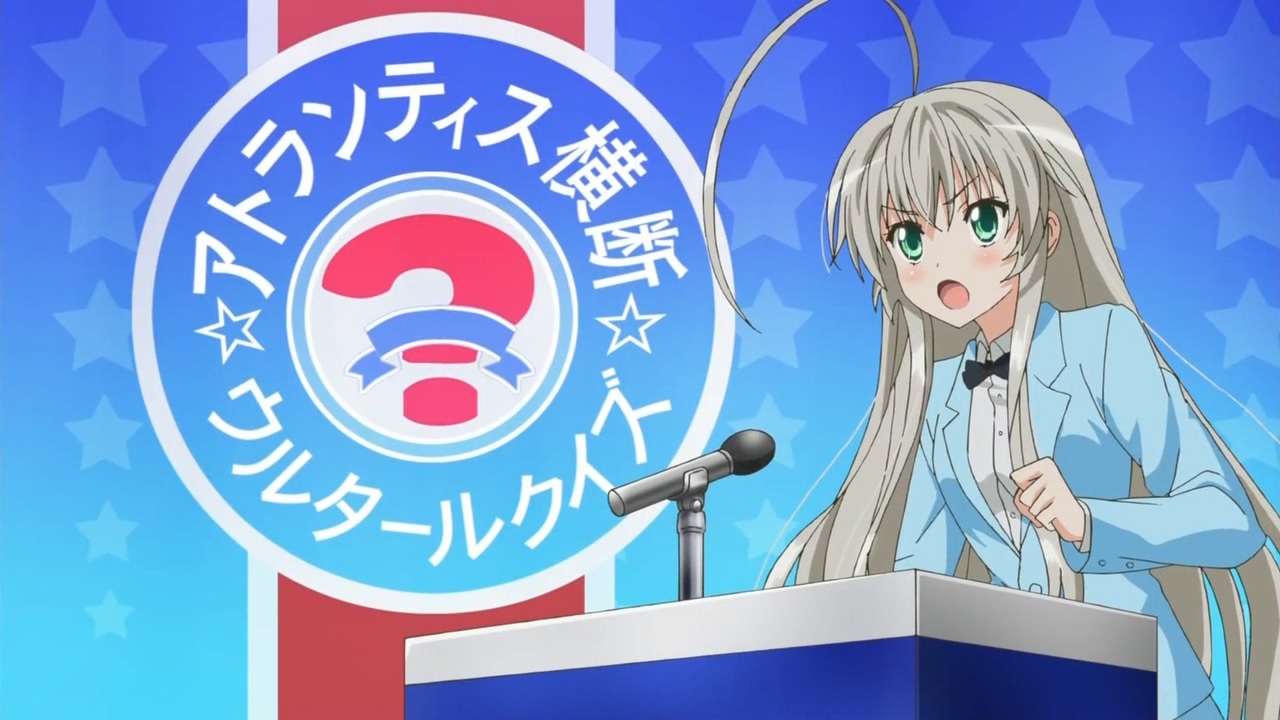
(6:25)
The text in the background reads, "Atorantisu Oudan Urutaaru Kuizu" (アトランティス横断ウルタールクイズ), "Trans Atlantis Ulthar Quiz". There are two references here:
* This is referencing "Amerika Oudan Urutora Kuizu" (アメリカ横断ウルトラクイズ), "Trans America Ultra Quiz", a Japanese game show that aired from 1977 to 1998.S1
* "Urutaaru" (ウルタール), "Ulthar", is the name of a city in the Cthulhu Mythos.
"Do you want to go to New England?! Are you not afraid of punishment games?!" (6:26)
The Japanese line is "Nyuu Ingurando he ikitai ka! Batsu geemu ha kowakunai ka!" (ニューイングランドへ行きたいか!罰ゲームは怖くないか!). There are two references here:
* This is referencing a line said during "Amerika Oudan Urutora Kuizu" (アメリカ横断ウルトラクイズ), "Trans America Ultra Quiz".S2 The original line goes, "Nyuu Yooku he ikitai ka! Batsu geemu ha kowakunai ka!" (ニューヨークへ行きたいか!罰ゲームは怖くないか!), which translates to "Do you want to go to New York?! Are you not afraid of punishment games?!". Video for reference: https://youtube.com/watch?v=HlsSvO1l0lA
* New England is the setting of many stories written by H. P. Lovecraft.
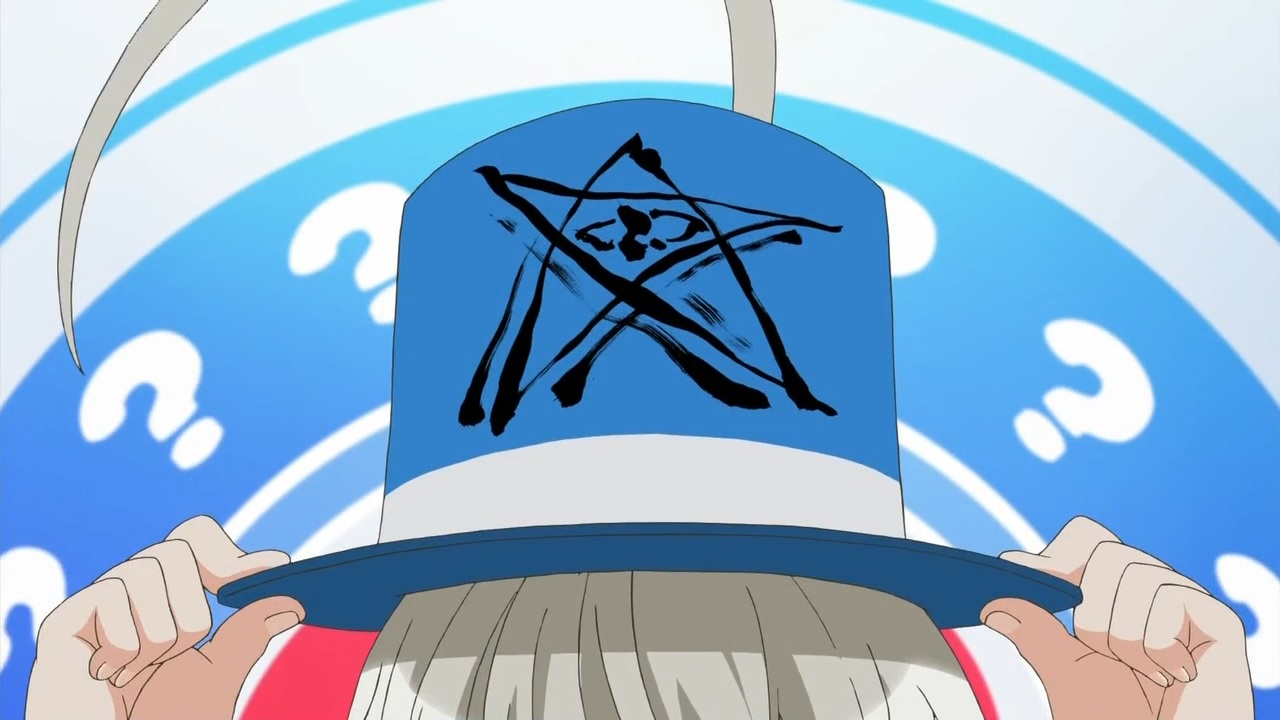
(6:32)
The symbol on the hat that Nyaruko is wearing is referencing August Derleth's description the Elder Sign, a symbol that appears in the Cthulhu Mythos. Image from the 5th edition rule book for the "Call of Cthulhu" RPG for reference:

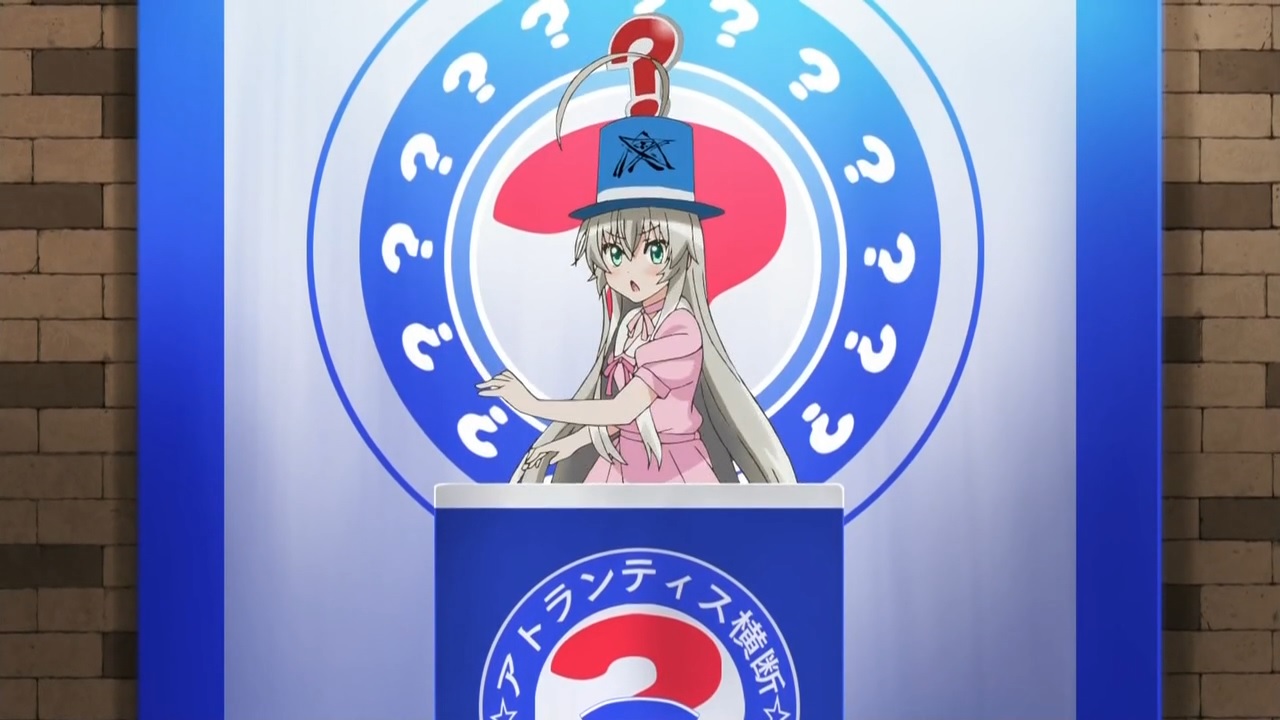
(6:38)
The hat that Nyaruko is wearing is referencing the hats worn by the contestants in "Amerika Oudan Urutora Kuizu" (アメリカ横断ウルトラクイズ), "Trans America Ultra Quiz". Contestants are each given a hat to wear that is connected to a button. When a contestant wants to answer a question, the contestant presses the button to chime in. When the button is pressed, a question mark will pop up from the contestant's hat. Image for reference:
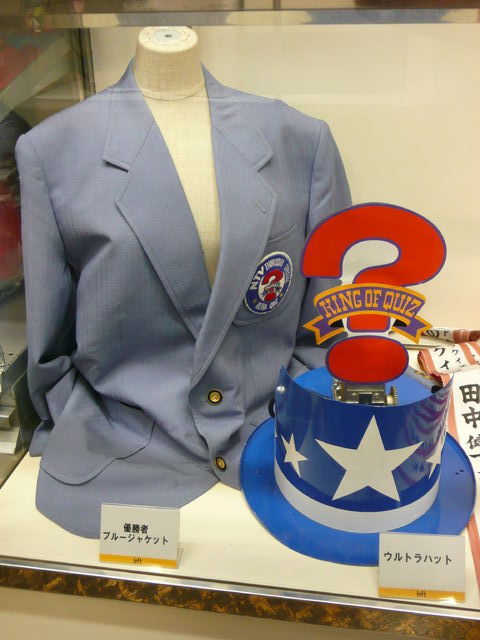
Source of image: http://ameblo.jp/takeda77/entry-10628196734.html
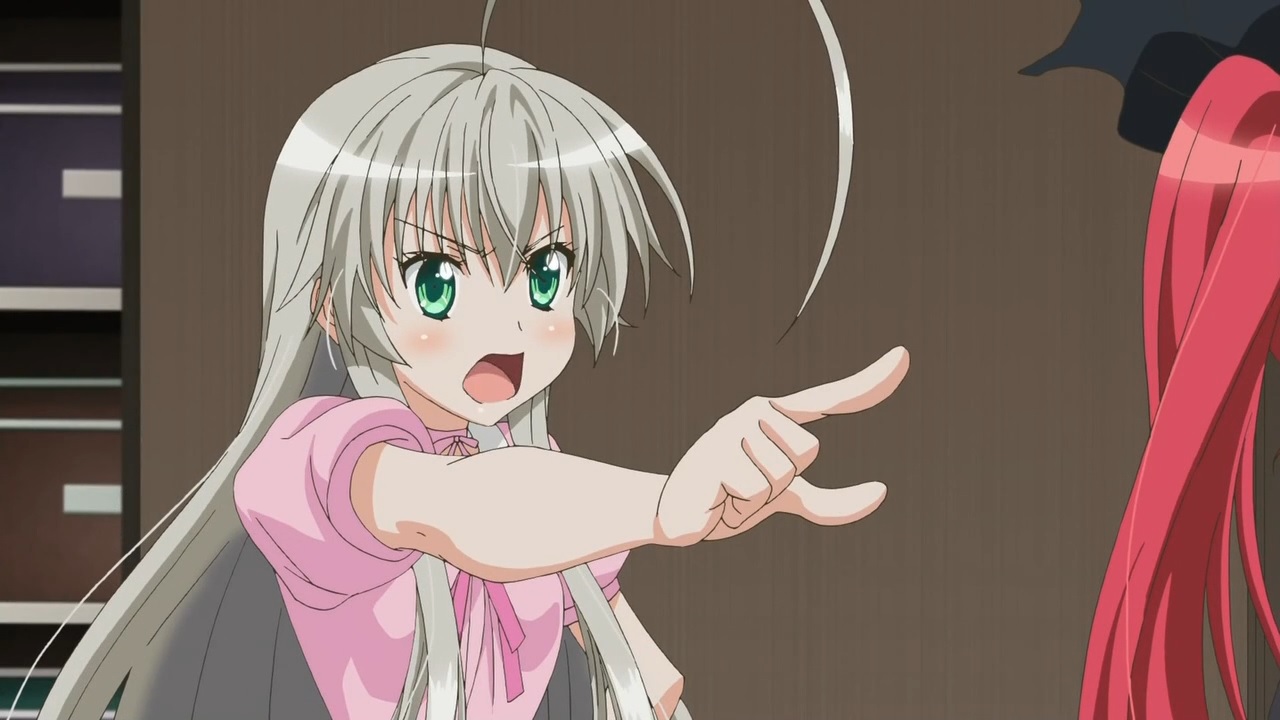
"As I thought, the culprit is Yasu..." (7:03)
A warning in advance, this line is a spoiler.
The Japanese line is "Yappari hannin ha Yasu..." (やっぱり犯人はヤス・・・). This is referencing "Pootopia Renzoku Satsujin Jiken" (ポートピア連続殺人事件), "The Portopia Serial Murder Case", a video game released in 1983.S1 The game is about a detective and his partner Mano Yasuhiko (間野康彦), also known as Yasu (ヤス), who attempt to uncover the culprit of the Portopia Serial Murder Case. It is later revealed that Yasu is the true culprit. The phrase "Hannin ha Yasu" (犯人はヤス), "The culprit is Yasu", has become popular phrase online.
"Hellish cobra twist of the nameless monstrosity!" (7:07)
The Japanese line is "Meijou shigatai kaibutsu no jigoku meita kobura tsuisuto!" (名状しがたい怪物の地獄めいたコブラツイスト!). This is referencing a phrase in "The Call of Cthulhu", a short story written by H. P. Lovecraft and first published in 1928.S3 The original phrase is "hellish outlines of the nameless monstrosity", and the Japanese translation is "meijou shigatai kaibutsu no jigoku meita gaibou" (名状しがたい怪物の地獄めいた外貌). The sentence as a whole goes as follows:
"Once before, it appears, Professor Angell had seen the hellish outlines of the nameless monstrosity, puzzled over the unknown hieroglyphics, and heard the ominous syllables which can be rendered only as "Cthulhu"; and all this in so stirring and horrible a connexion that it is small wonder he pursued young Wilcox with queries and demands for data."

(7:27)
The title of this episode is "Chiisana Koi no Uta." (小さな恋のうた。), which translates to "Little Love Song.". This is referencing "Chiisana Koi no Uta" (小さな恋のうた), "Little Love Song", a song sung by MONGOL800 and released in 2001.S1
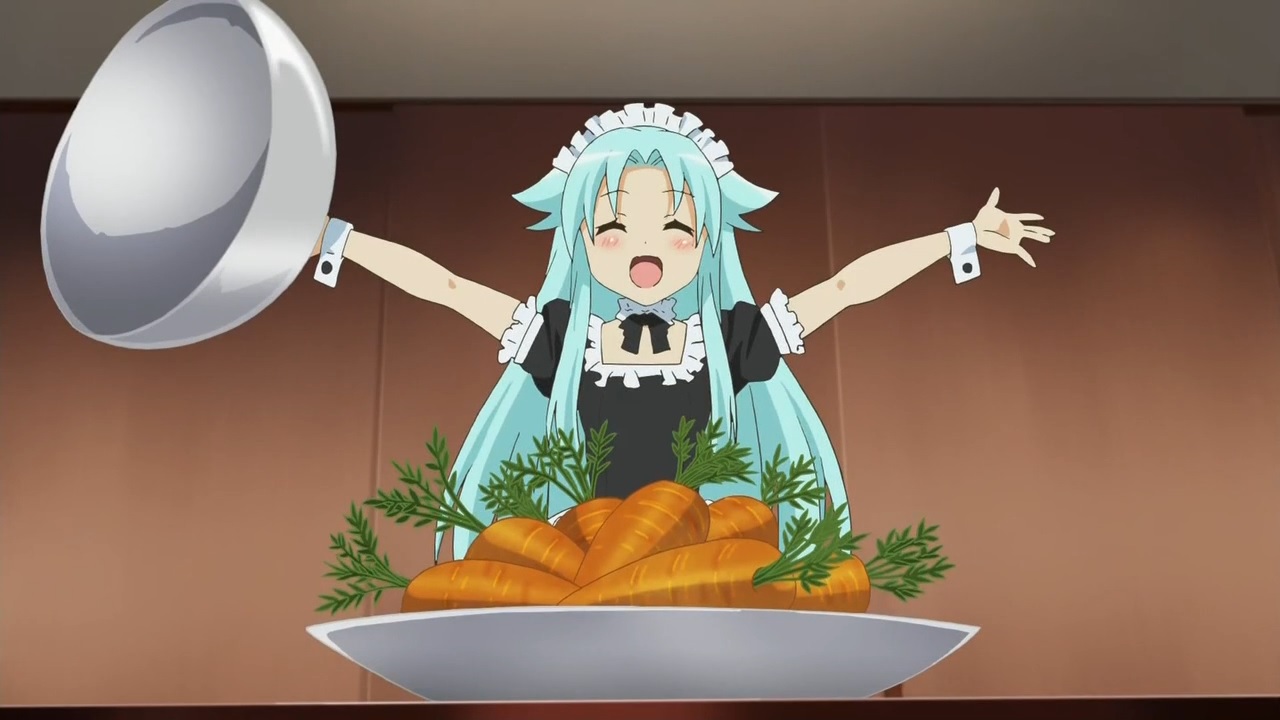
(8:13)
Shantakkun serves Mahiro a plate full of carrots. Shantakkun's love of carrots is referencing Ryou Ouki (魎皇鬼) from "Tenchi Muyou! Ryou Ouki" (天地無用! 魎皇鬼), an anime series that was released from 1992 to 2005. Ryou Ouki is a small creature that resembles a rabbit. Shantakkun shares several traits with Ryou Ouki.
* Ryou Ouki's master is an alien who falls in love with a human.
* Ryou Ouki's usual form is of a small creature.
* Ryou Ouki loves to eat carrots.
* Ryou Ouki is able to understand human language but generally only communicates by meowing.
* Ryou Ouki is able to change its form into a large spaceship.
* Ryou Ouki is able to change its form into a human shaped female child.
"Nyaruko, endless defense is unfair." (9:13)
The term "owari no nai difensu" (終わりのないディフェンス), "endless defense", is referencing "Mobile Suit Gundam: Gundam vs. Gundam" (機動戦士ガンダム ガンダムVS.ガンダム), a video game released for the PlayStation Portable in 2008.S2 The main game play involves piloting a mobile suit in a 3D environment and fighting against other mobile suits. In the game, there is evasion technique that exploits the mechanics of the game. By positioning oneself at an extremely high altitude, enemy ranged weapons are unable to properly target and attack. One of the playable mobile suits that is able to utilize this technique particularly well is the Victory Gundam (ヴィクトリーガンダム). It can fly to high altitudes and remain there endlessly to avoid damage from ranged weapons. Because of this, the technique is popularly known as "owari no nai difensu" (終わりのないディフェンス), "endless defense". This is referencing a line in the lyrics to the opening theme song of "Mobile Suit Victory Gundam" (機動戦士Vガンダム), an anime series that aired from 1993 to 1994.S2 The original line goes, "owari no nai Defence de mo ii yo" (終わりの無い Defenceでもいいよ), which roughly translates to "I don't mind, even if I'm fighting against an endless defense".
"Stop using Cykranosh!" (10:32)
Cykranosh, "Saikuranooshu" (サイクラノーシュ), is a name created by Clark Ashton Smith, an American author who wrote many Cthulhu Mythos stories. This name is used to refer to the planet Saturn in the Cthulhu Mythos.S3 On a related note, Cykranosh is also the name of a robot that appears in "Zanma Taisei Demonbein" (斬魔大聖デモンベイン), "Deus Machina Demonbane", a visual novel based on the Cthulhu Mythos that was released by Nitroplus (ニトロプラス) in 2003.S3
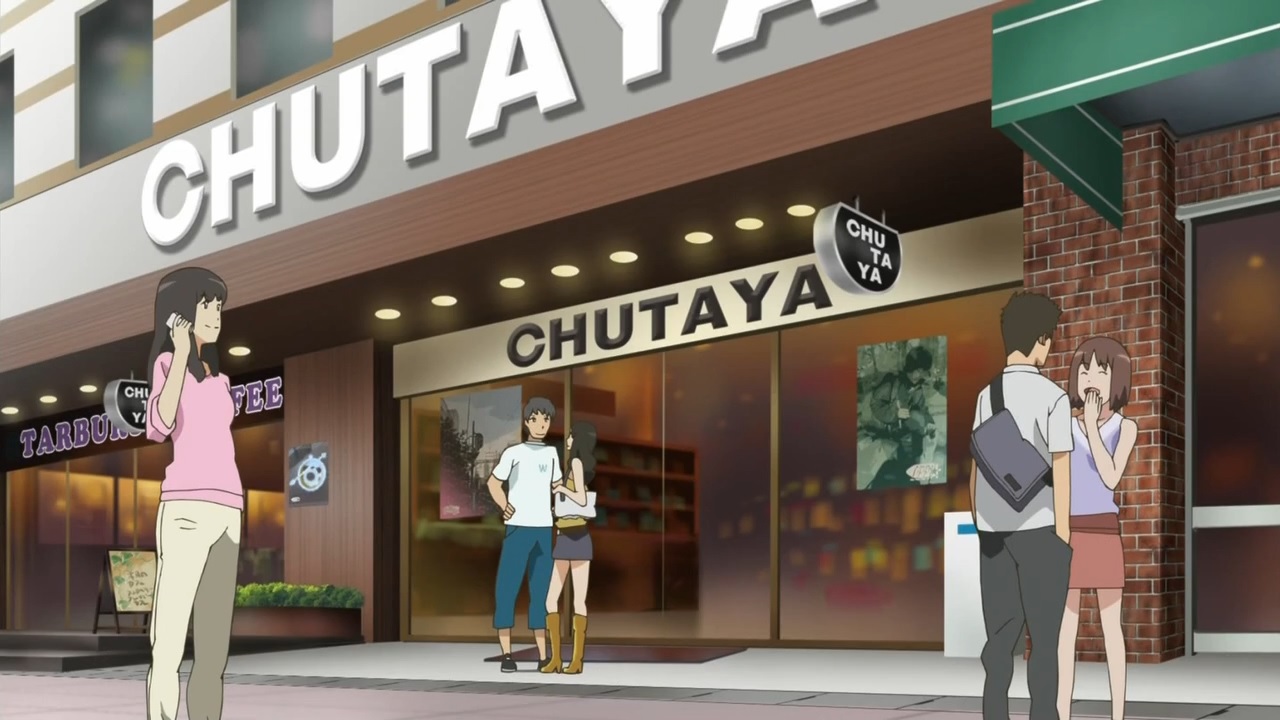
(11:10)
There are three references here:
* The rental store that Mahiro goes into is called "CHUTAYA". This is referencing TSUTAYA, a store that rents out media such as CD's and DVD's.S1 In particular, the outside of the store greatly resembles the TSUTAYA in Hirakata in Osaka, which is where TSUTAYA was founded. Image for reference:

Source of image: https://ja.wikipedia.org/wiki/ファイル:TSUTAYA_Hirakata_Ekimae_Honten.JPG
* The store to the left of the CHUTAYA appears to be called "TARBUKS COFFEE". This is referencing Starbucks Coffee, a chain of restaurants that serve coffee. In addition, a Starbucks Coffee restaurant can be seen to the left of the TSUTAYA in Hirakata.
* The name "CHUTAYA" appears to be is referencing Cthulhu, a creature classified as a Great Old One in the Cthulhu Mythos.
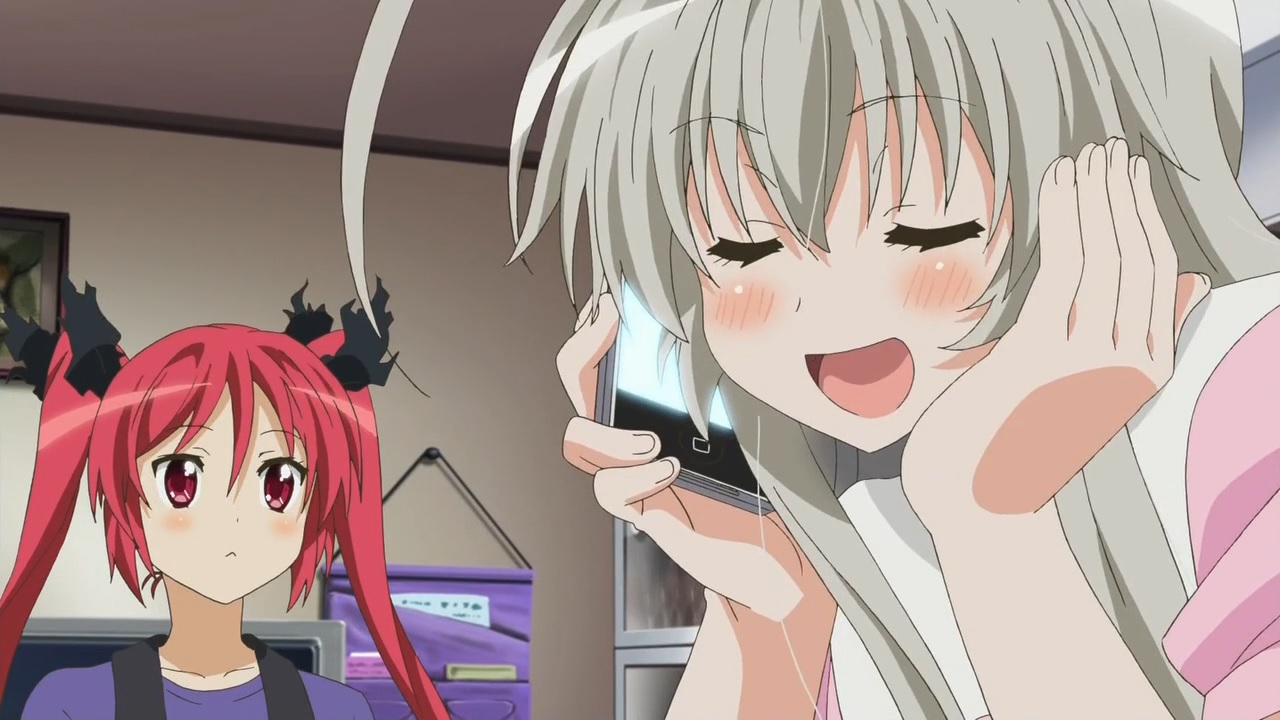
"When I'm lonely and when I'm sad, you always come to my mind." (11:46)
The Japanese line is "Samishii toki mo, kanashii toki mo, itsumo Mahiro-san ga me ni ukabimasu" (寂しい時も、悲しい時も、いつも真尋さんが目に浮かびます). This is referencing a line in the lyrics to "Itsumo Anata ga" (いつもあなたが), "You Always", a song sung by TETSU and released in 1983. This song is the ending theme song for "Soukou Kihei Botomuzu" (装甲騎兵ボトムズ), "Armored Trooper Votoms", an anime series that aired from 1983 to 1984.S1 The original line goes, "samishii toki mo kanashii toki mo itsumo anata ga me ni ukabu" (さみしい時も かなしい時も いつもあなたが 目にうかぶ), which translates to "when I'm lonely and when I'm sad, you always come to my mind".
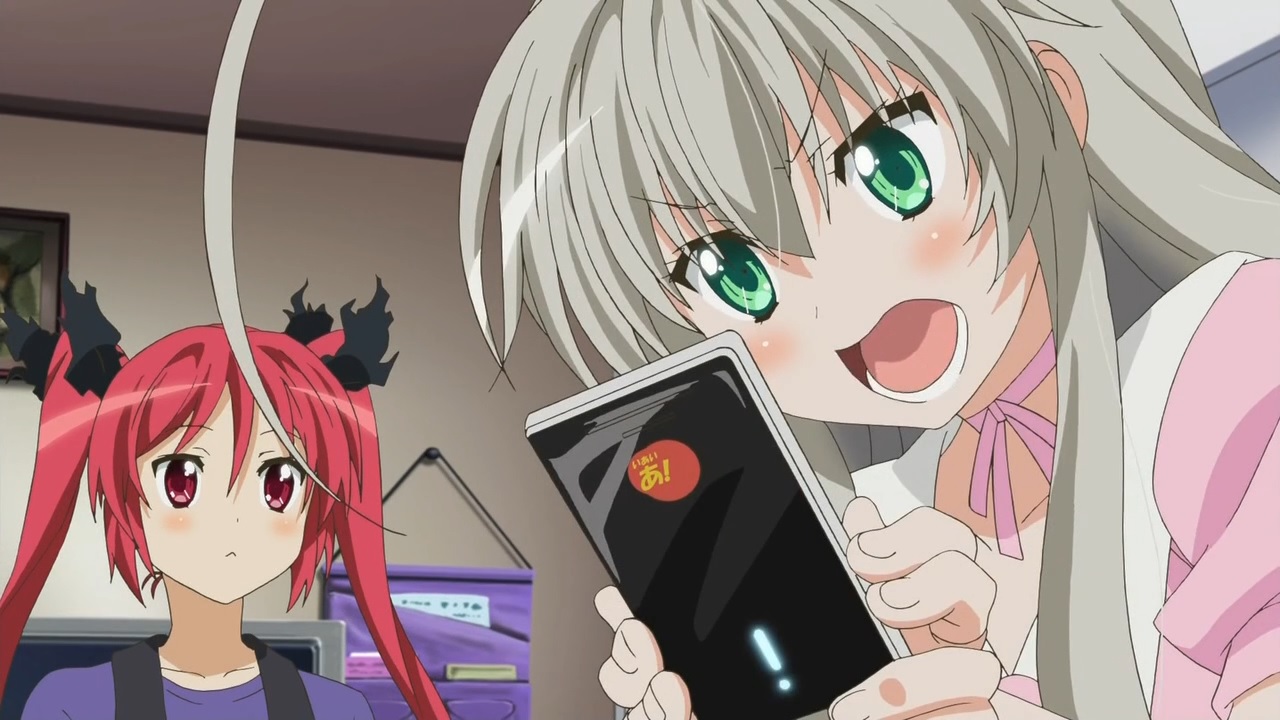
(11:53)
There is a small red logo on Nyaruko's phone.
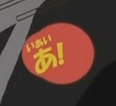
There are two references here:
* This is referencing "Azumanga Daioh" (あずまんが大王), a manga series written by Azuma Kiyohiko (あずまきよひこ) and published from 1999 to 2002. In particular, the yellow text within a red speech bubble appears to be referencing the same color scheme used for the title of the anime adaptation of this series that aired in 2002. In addition, the big 「あ」 character within the speech bubble is referencing how at times in this series characters have been depicted with a speech bubble containing the character 「あ」. Images for reference:
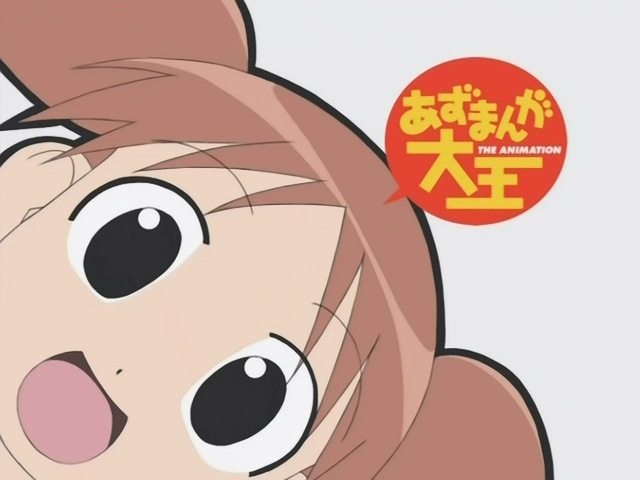
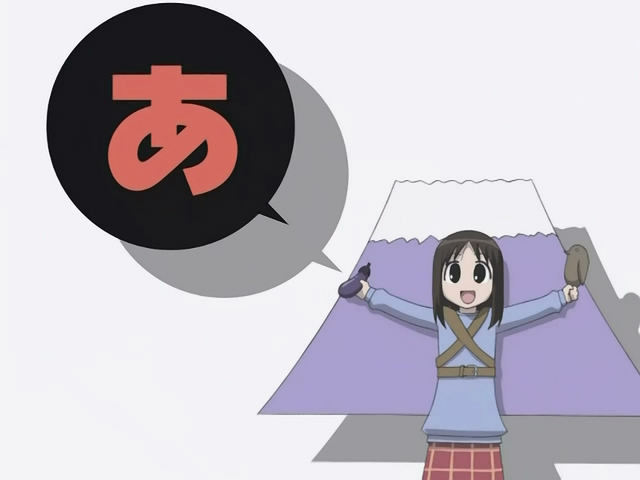
* The text within the logo reads "Ia Ia!" (いあいあ!). "Iä" is a term that is used in the Cthulhu Mythos, often in relation to the fantastic creatures that appear in the mythos. In "The Shadow Over Innsmouth", a story written by H. P. Lovecraft and first published in 1936, a chant using the term goes as follows:
"Iä! Iä! Cthulhu fhtagn! Ph’nglui mglw’nafh Cthulhu R’lyeh wgah-nagl fhtagn"
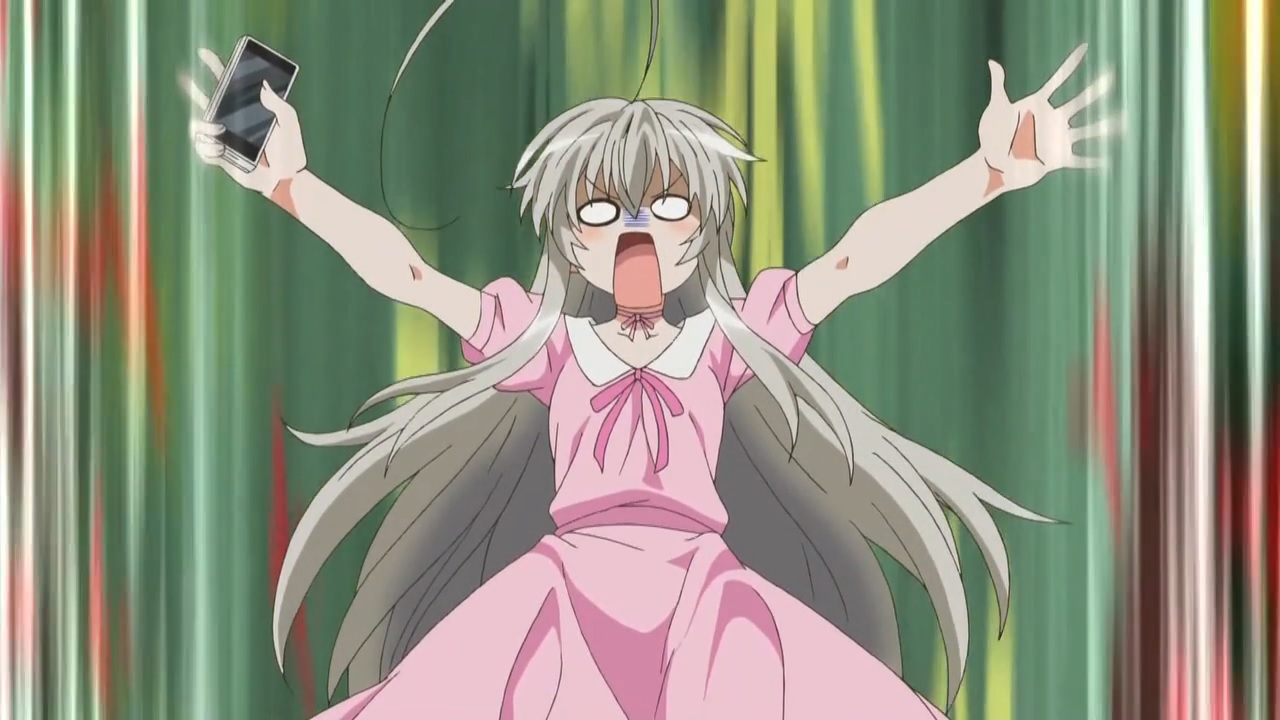
"The phone connection... suffered a Great Cut?!" (12:28)
There are two references here:
* "Dai Setsudan" (大切断), "Great Cut", is the name of a special technique used by Kamen Rider Amazon in "Kamen Rider Amazon" (仮面ライダーアマゾン), a Japanese TV show about a masked super hero that aired from 1974 to 1975.S2
* Nyaruko's poses in this scene are referencing those of Kamen Rider Amazon from "Kamen Rider Amazon" (仮面ライダーアマゾン). Kamen Rider Amazon does these poses to transform into his costumed appearance starting in episode 10. Images for reference:

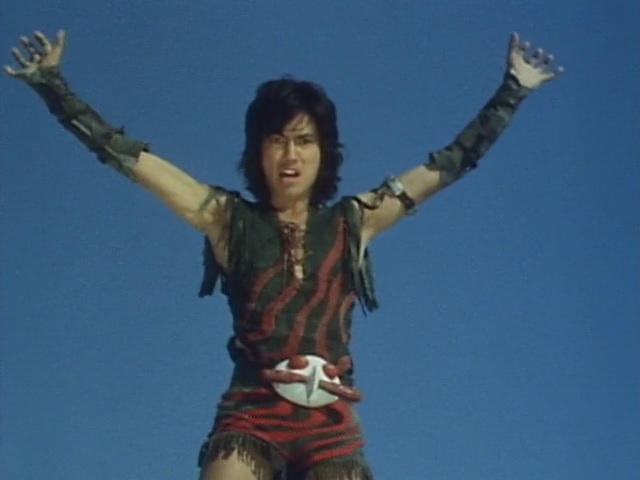
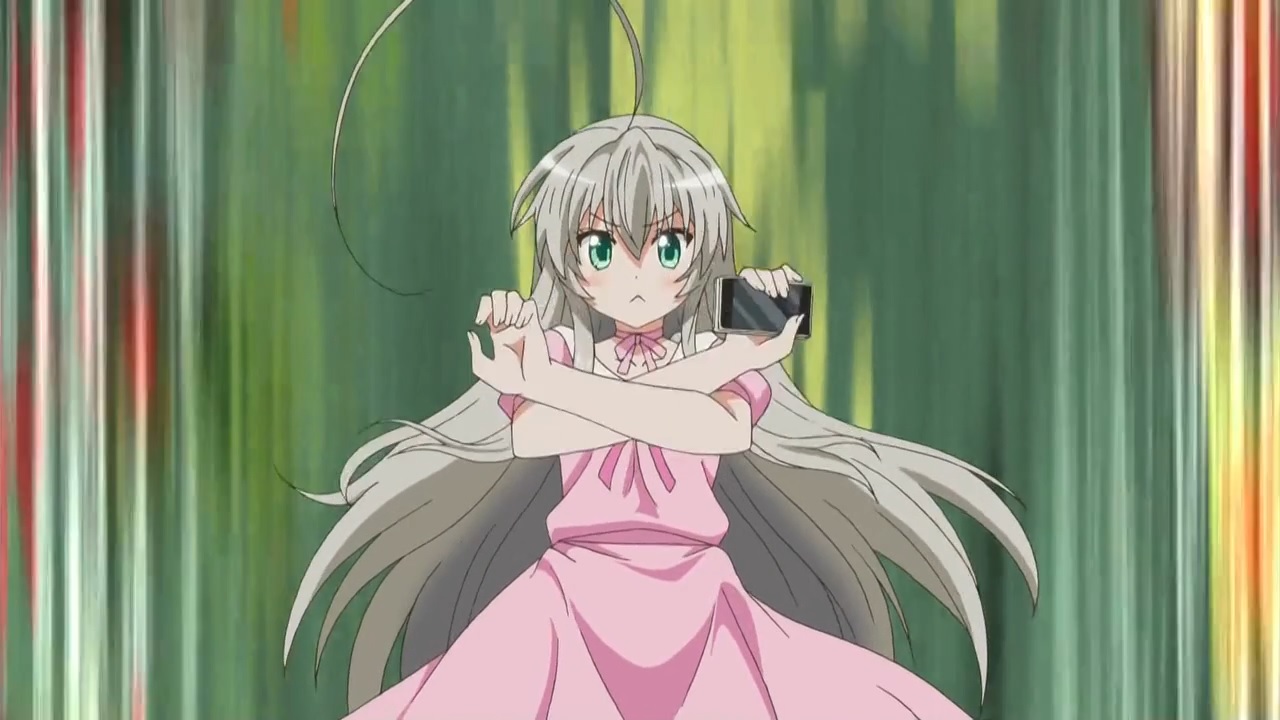
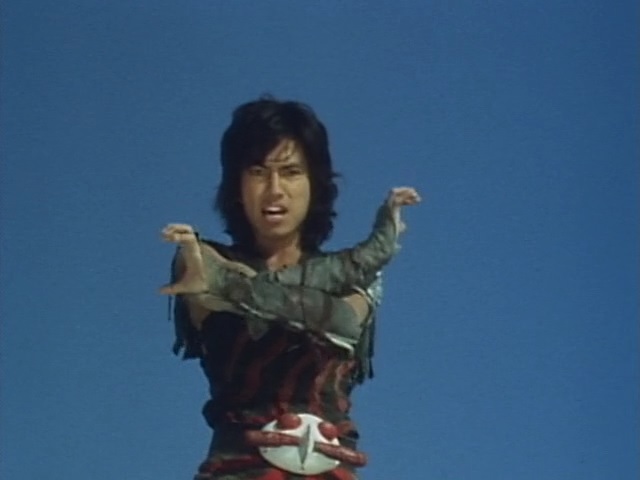


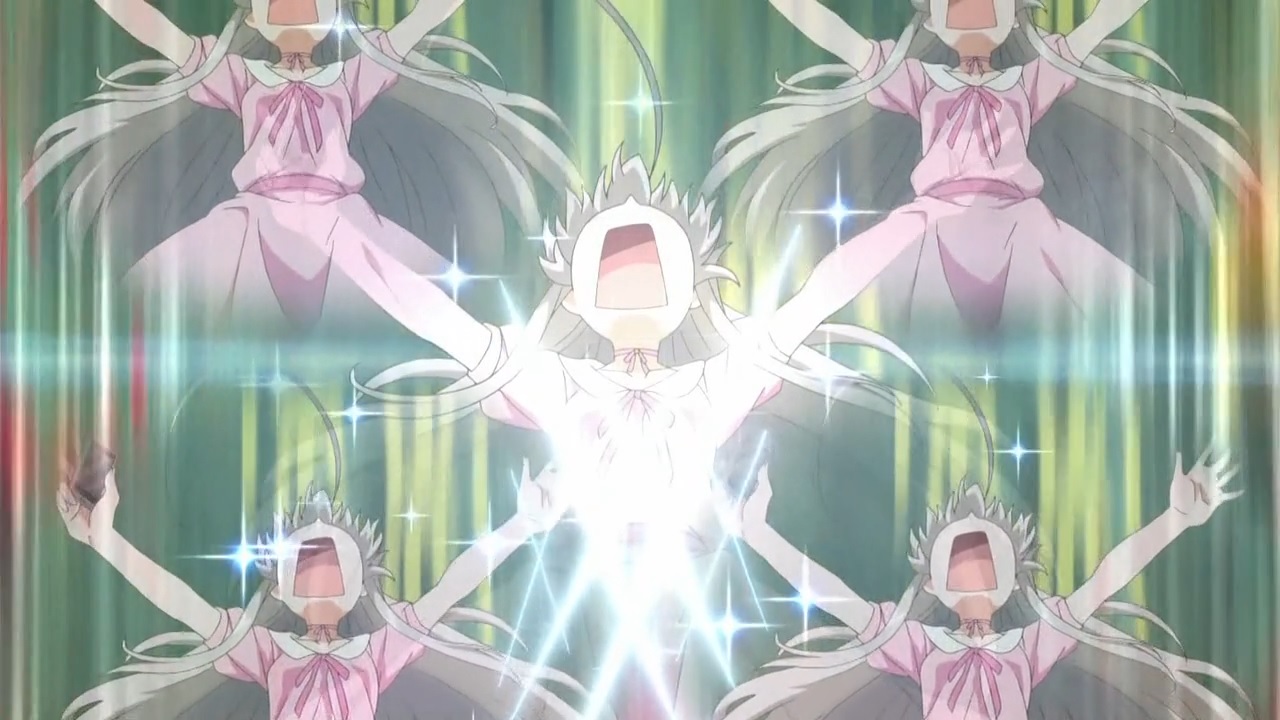
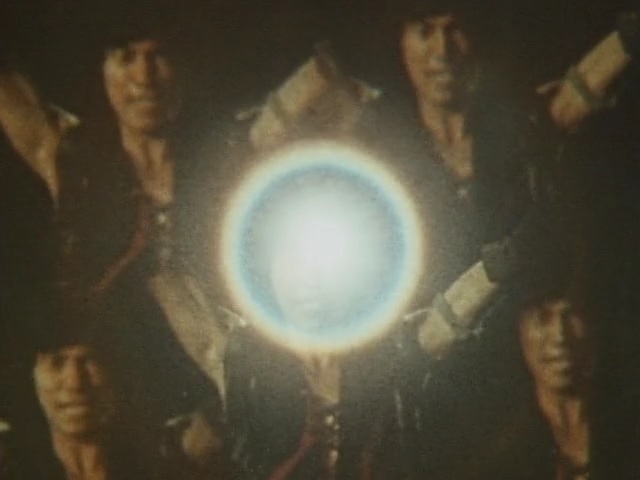
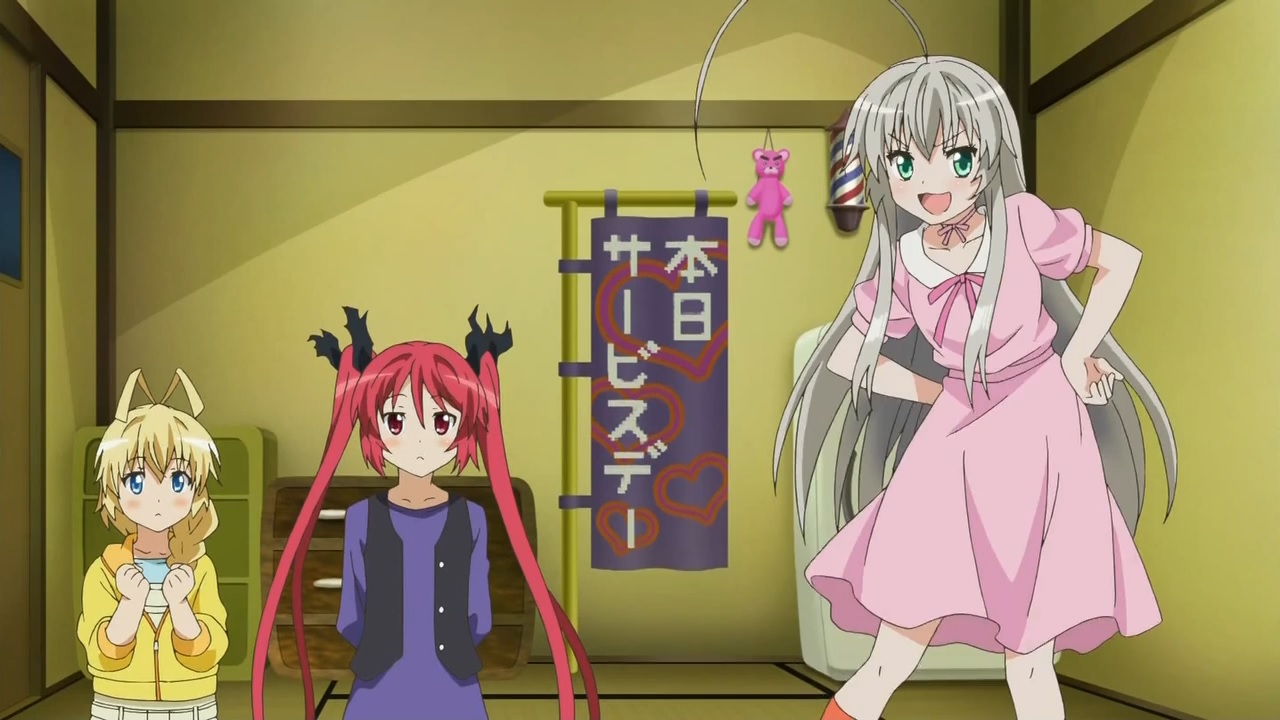
"Be together anywhere with Mahiro?" (12:37)
The Japanese line is "Mahiro-san to doko demo issho desu ka?" (真尋さんとどこでもいっしょですか?). This is referencing "Doko Demo Issho" (どこでもいっしょ), "Together Anywhere", a video game released in 1999. In addition, Nyaruko moving her hips from side to side in this scene is referencing Toro (トロ), the main character of "Doko Demo Issho", who occasionally moves its hips from side to side. Furthermore, Nyaruko and company suddenly appear in a room with tatami mats and accessories scattered around the room. This is referencing Toro's room in "Doko Demo Issho".S2 Image for reference:
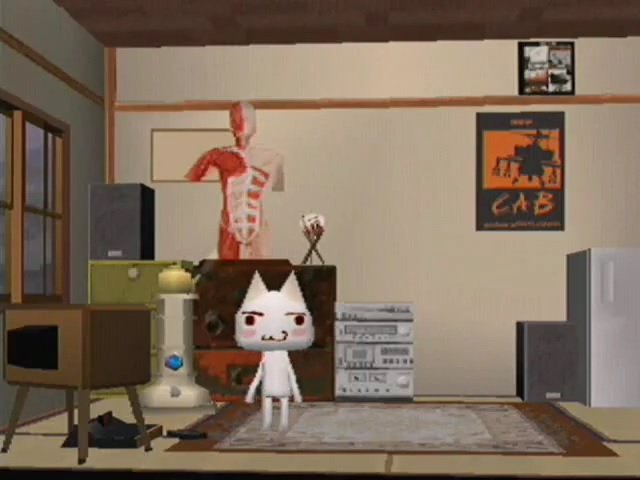
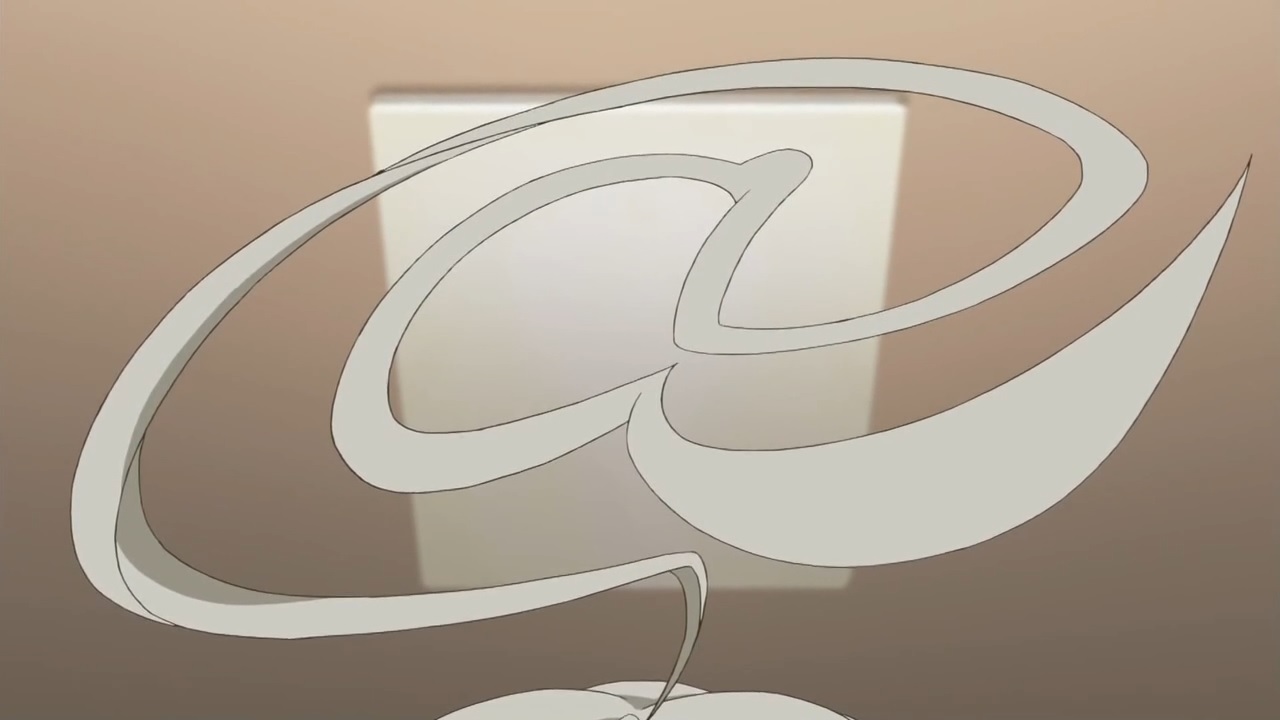
"It came to me, like a Pippin Atmark!" (12:46)
This is referencing "Pipin Attomaaku" (ピピンアットマーク), "Pippin atmark", a video game console released in 1996.S2
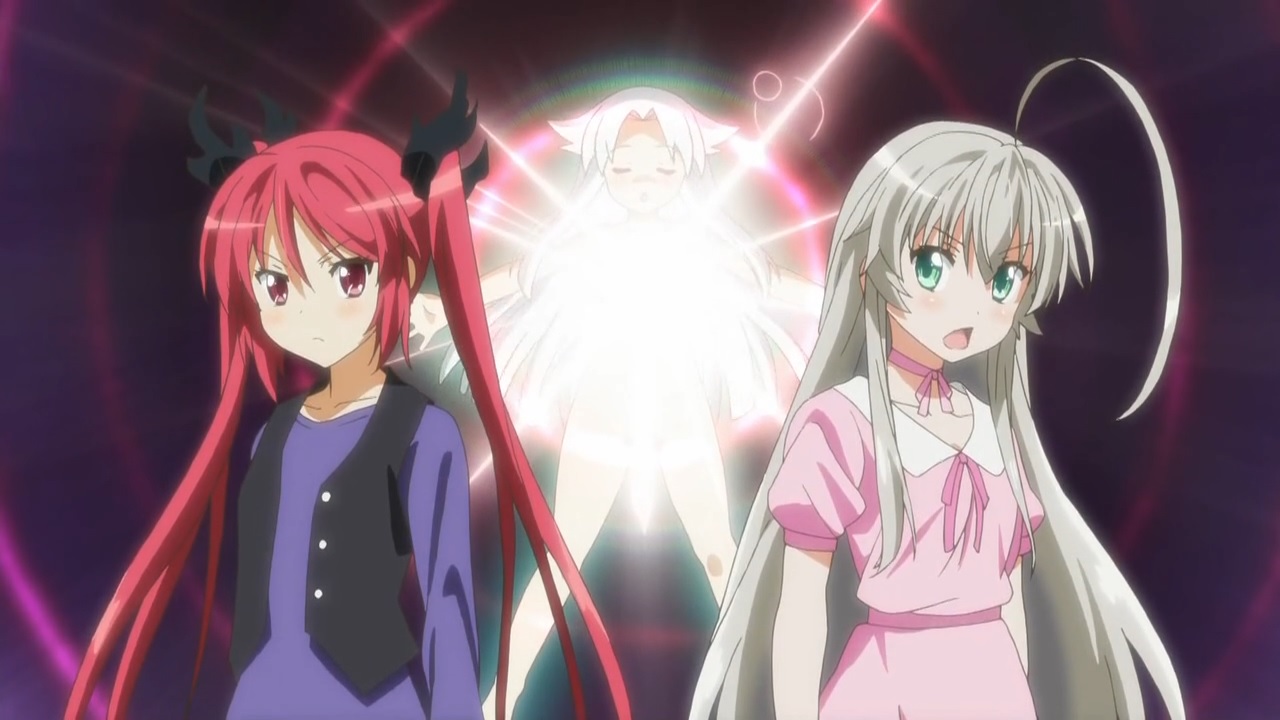
"Operation Shantakkun capture, begin!" (12:50)
The phrase "Shantakkun rokaku rakusen" (シャンタッ君鹵獲作戦), "Operation Shantakkun capture", is referencing "Mobile Suit Gundam 00" (機動戦士ガンダム00), an anime series that aired from 2007 to 2008. Episode 10 of the series is titled "Gandamu Roraku Sakusen" (ガンダム鹵獲作戦), "Operation Gundam Capture". In addition, there is a novel series based on "Mobile Suit Gundam 00" written by Kimura Noboru (木村暢) and published from 2008 to 2010. Volume 2 of the series was published in 2008 and is titled "Kidou Senshi Gandamu 00 (2) Gandamu Rokaku Sakusen" (機動戦士ガンダムOO (2) ガンダム鹵獲作戦), "Mobile Suit Gundam 00 (2) Gundam Rokaku Operation". The appearance of the above scene is referencing the cover art of this novel.S2 Image for reference:

Source of image: https://bookwalker.jp/dede18f8d6-ccc6-470c-87b2-c1227565fd8b/
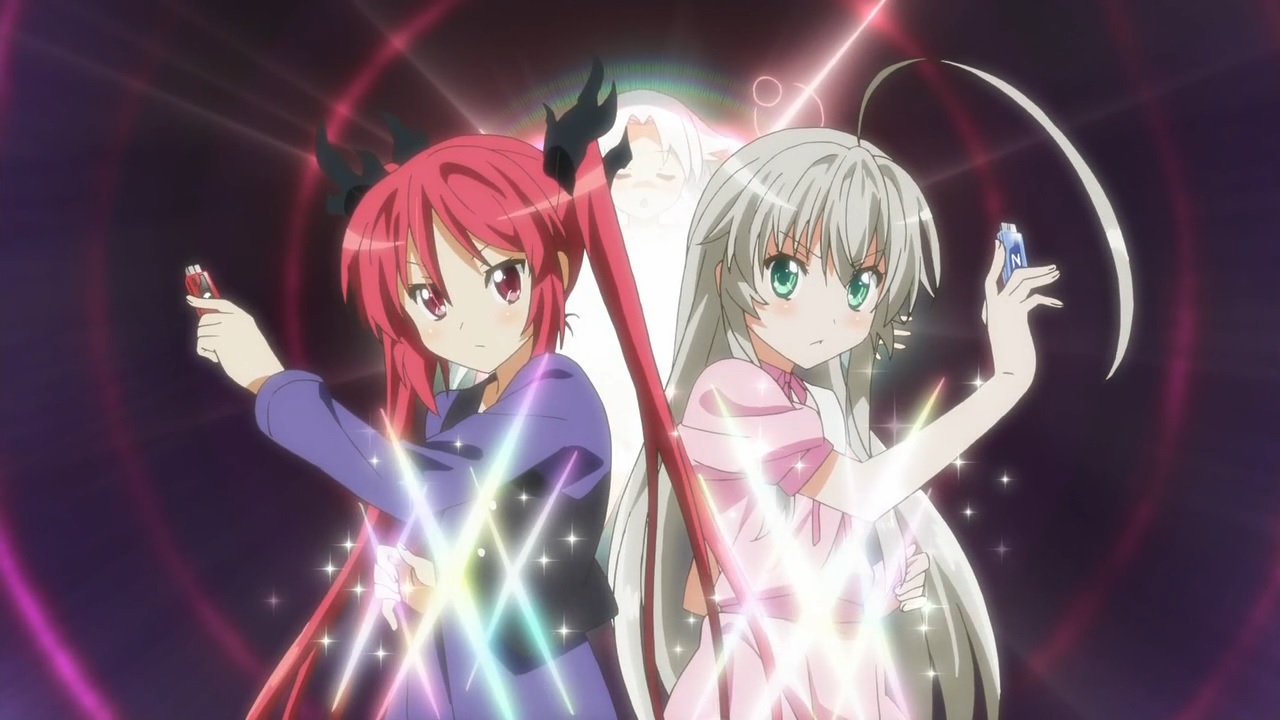
(12:52)
The poses done by Nyaruko and Cthuko are referencing those done by Hidari Shoutarou (左翔太郎) and Philip (フィリップ) in "Kamen Rider W" (仮面ライダーW), a Japanese TV show about a masked super hero that aired from 2009 to 2010. Image for reference:
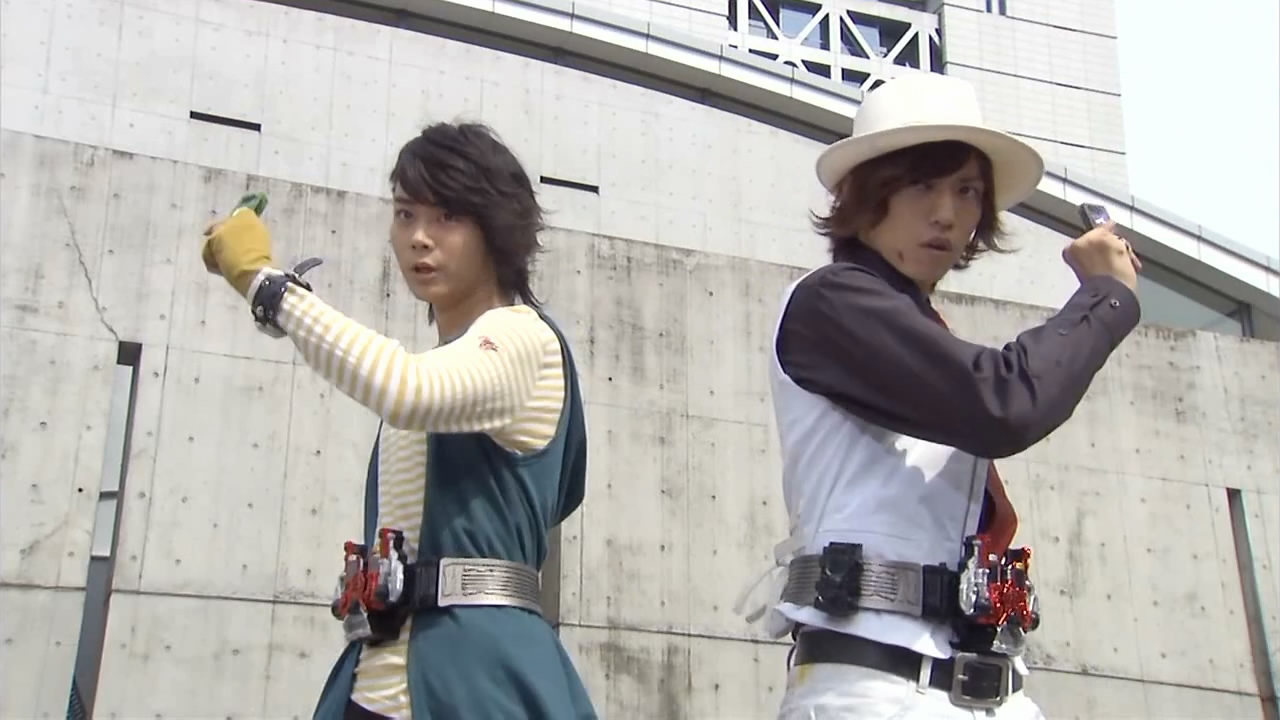
In addition, Nyaruko and Cthuko are holding up USB drive shaped devices. These are referencing Gaia Memories (ガイアメモリ), devices shaped like USB drives that can grant special abilities that appear in "Kamen Rider W".
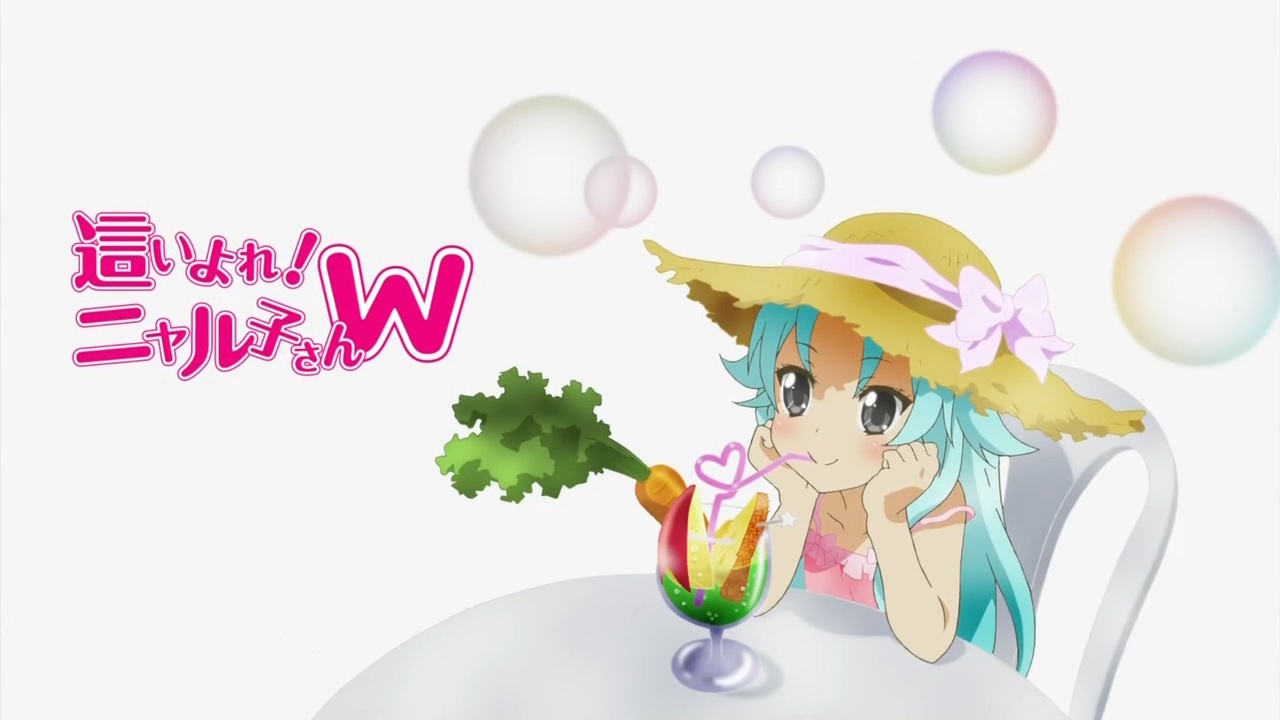
"It was mii!" (13:02)
Shantakkun says, "Mii!" (みー!), and then the narrator says, "deshita to sa" (でしたとさ). This is referencing the narrator in "Ookami-san to Shichinin no Nakama-tachi" (オオカミさんと七人の仲間たち), "Ookami and her Seven Companions".S2 At the end of an episode the narrator says a closing remark that often ends with the phrase "to sa" (とさ), which is used to express how one is conveying hearsay and roughly means "it is said" or "it appears". In episode 3 the narrator closes the episode by saying, "Iroiro arimasu ga, itsumo doori heiwa na Otogi Ginko datta to sa. Medetashi medetashi" (いろいろありますが、いつもどおり平和な御伽銀行だったとさ。めでたしめでたし), which translates to "Various things happen, but Otogi Bank was peaceful as always. And they all lived happily ever after."
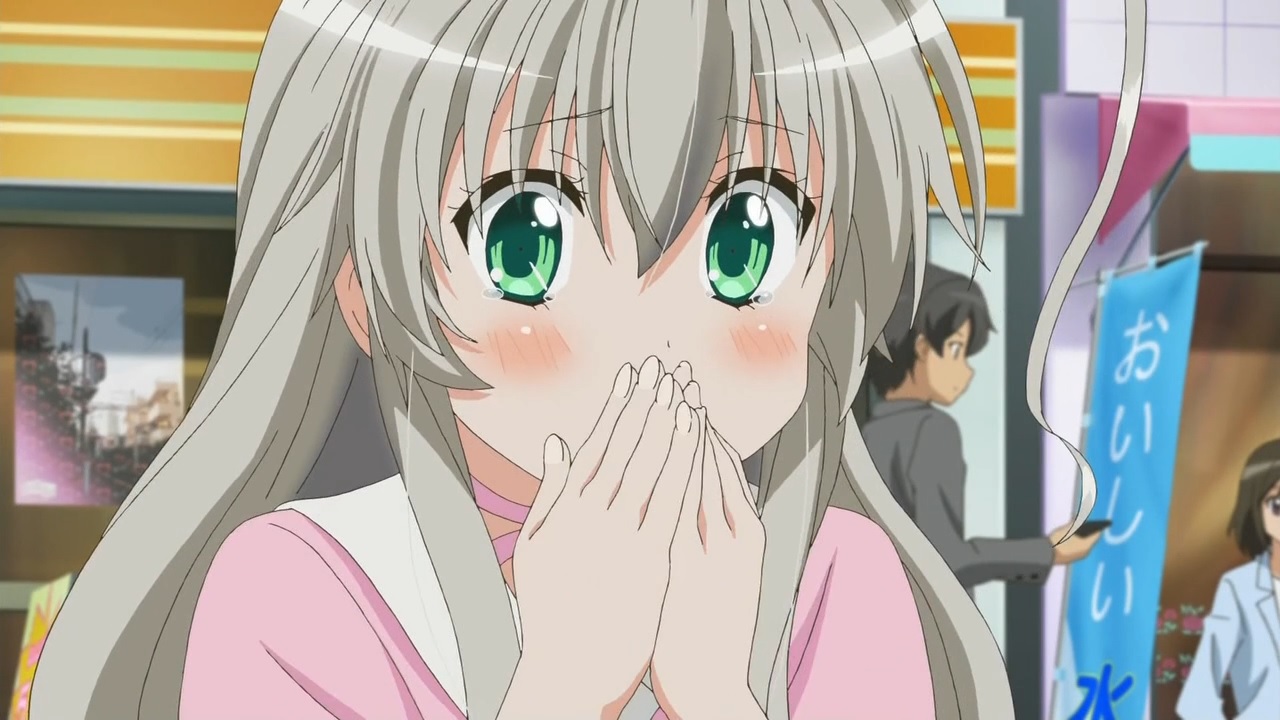
"Wow! My pet, is too valiant!" (13:28)
The Japanese line is "Uwa! Watashi no petto, kenage sugi!" (うわっ!私のペット、健気すぎ!). This is referencing a catch phrase used in an advertisement for @type (アットタイプ), a Japanese website used for changing occupation.S2 The original line goes, "Uwa... Watashi no nenshuu, hiku sugi...?" (うわっ・・・私の年収、低すぎ・・・?), which translates to "Wow... My annual income, is too low...?". In addition, Nyaruko's pose with her hands over her mouth is referencing the same pose of a woman pictured in the @type advertisement. Image for reference:
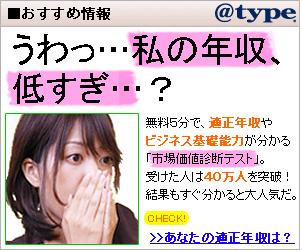
Source of image: http://matome.naver.jp/odai/2133261797079739701
"You go back to the house! The Splatter House! I'll sliding kick you!" (13:47)
"Supuratta Hausu" (スプラッターハウス), "Splatter House", is the title of a video game released in 1988. In addition, "Suraidingu Kikku" (スライディングキック), "Sliding Kick", is a technique that can be used in the game.S1
"In that case, no need for talk! No need for Tenchi!" (14:07)
The phrase "Tenchi Muyou" (天地無用), "No need for Tenchi", is referencing "Tenchi Muyou! Ryou Ouki" (天地無用! 魎皇鬼).S2 "Tenchi Muyou" (天地無用) literally translates to "No need for Tenchi", which is referring to Masaki Tenchi (柾木天地), the main character of the series.
"That Nyaruko, being violent" (14:11)
The Japanese line is "Sono Nyaruko, kyoubou ni tsuki" (そのニャル子、凶暴につき). This is referencing "Sono Otoko, Kyoubou ni Tsuki" (その男、凶暴につき), "That Man, Being Violent", a Japanese film released in 1989.S2
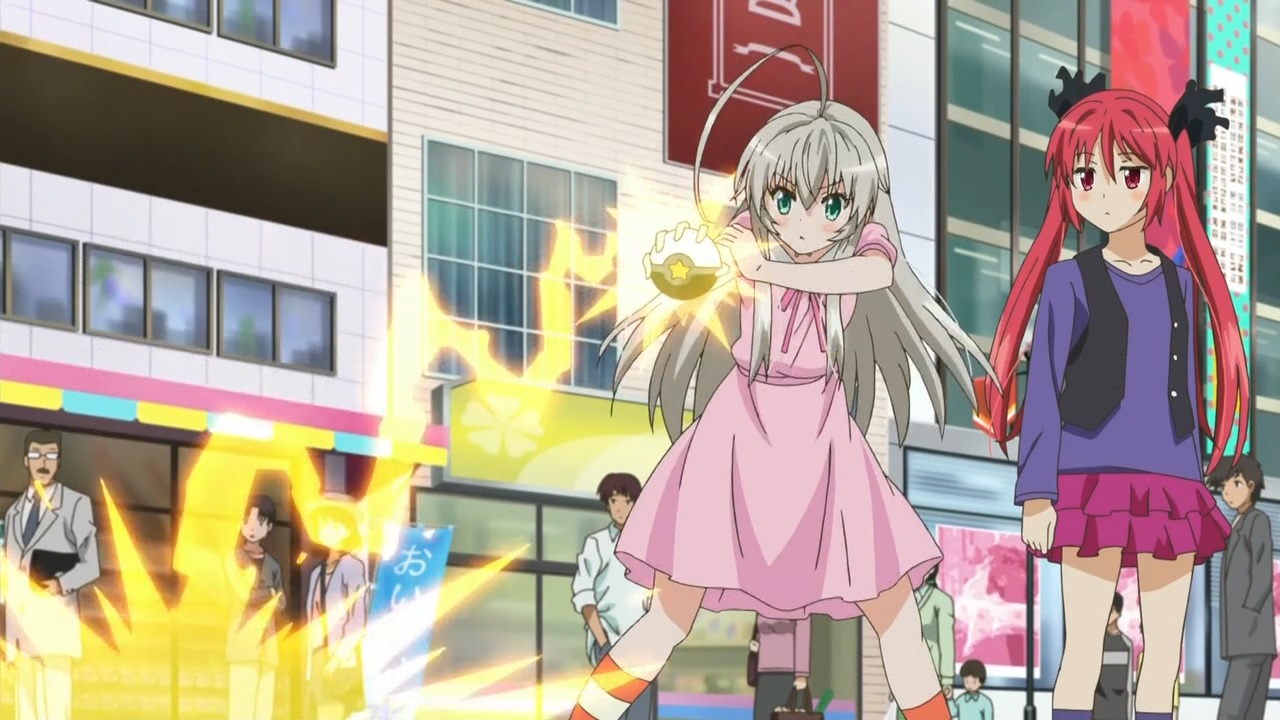
(14:13)
The ball that Nyaruko is holding is referencing a "Monster Ball" (モンスターボール), also known as a "Pokeball", from "Poketto Monsutaa" (ポケットモンスター), "Pokemon", an anime series that aired from 1997 and is currently ongoing. In the series, a Monster Ball is a device used to store Pokemon. The mechanism for returning a Pokemon to its ball involves shooting a red beam of energy from the ball. When the beam touches the Pokemon, the Pokemon is converted into energy and then pulled into the ball.
"If you don't wait, I'll kick and punch you!" (14:38)
The phrase "keru naguuru" (蹴る殴ーる), "kick and punch", is referencing "Tenkaichi Bushi Keru Naguuru" (天下一武士 ケルナグール), "The Greatest Warrior on Earth Kick and Punch", a video game released in 1989.S2 On a related note, the title of this game is referencing a character named Yattaa Ra Kerunaguuru (ヤッター・ラ・ケルナグール) from "Sengoku Majin Gooshoogun" (戦国魔神ゴーショーグン), "Warring States Demon God GoShogun", an anime series that aired in 1981.S2
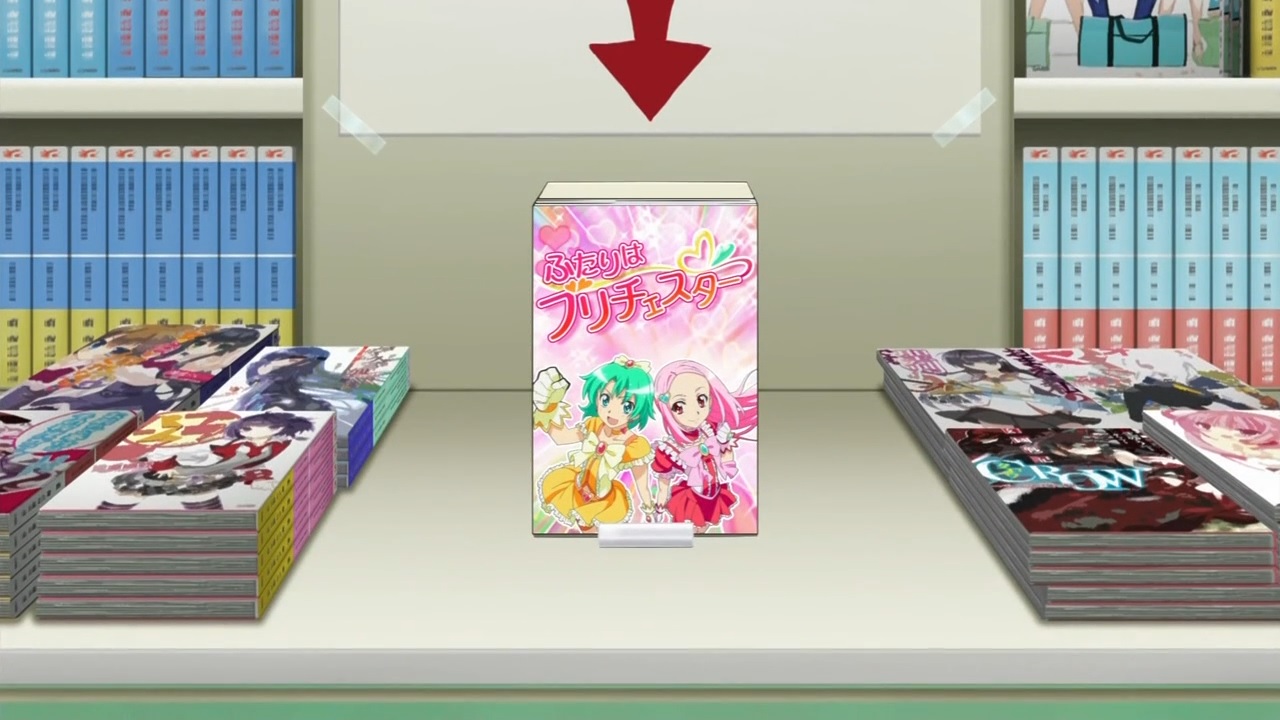
(14:57)
This is the box that appears in this scene.
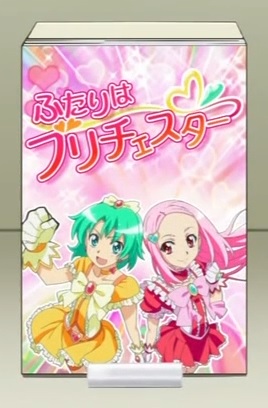
The title on the box is "Futari ha Burichesutaa" (ふたりはブリチェスター), "Together We are Brichester". There are three references here:
* The title and the cover art are referencing "Futari ha Purikyua" (ふたりはプリキュア), "We are Pretty Cure", an anime series that aired from 2004 to 2005.
* This fictional anime series appears in an OVA episode released for season 1 of "Haiyore! Nyaruko-san". Post for reference: https://nyaruref.github.io/nyaruko/nyaruko_ova.html
* "Burichesutaa" (ブリチェスター), "Brichester", is referencing the town of Brichester from the Cthulhu Mythos.
"I'm faster by 0.1 second certain kill!" (15:07)
The phrase "hissatsu no rei ten ichibyou" (必殺の0.1秒), "0.1 second certain kill", is referencing "Ultra Seven" (ウルトラセブン), a Japanese TV show about a super hero from outer space that aired from 1967 to 1968. Episode 36 of the show is titled "Hissatsu no Rei Ten Ichibyou" (必殺の0.1秒), "0.1 Second Certain Kill".
"I'm faster than that by 0.05 second!" (15:11)
The quantity 0.05 second is referencing "Uchuu Keiji Gyaban" (宇宙刑事ギャバン), "Space Sheriff Gavan", a Japanese TV show about a costumed super hero that aired from 1982 to 1983.S2 In the show, the time it takes for Gavan's combat suit to materialize and be equipped is 0.05 second.
"You can't follow my magical speed." (15:18)
The phrase "majikaru supiido" (マジカルスピード), "magical speed", is referencing "Majikaru Supiido" (まじかるスピード), "Magical Speed", a game released by ALLUMER (アルュメ) in 1994.S2
"Is that the extent of your service?!" (17:04)
The Japanese line is "Anta no gohoushi ha sono teido desu ka!" (あんたのご奉仕はその程度ですか!). This is referencing "Omae no Gohoushi ha Sono Teido ka?" (お前のご奉仕はその程度か?), "Is That the Extent of Your Service?", a light novel series written by Morita Kisetsu (森田季節) and published from 2011 and is currently ongoing.S2
(23:50)
In this scene there are images separated by video static of Cthune crawling out of the closet. This appears to be referencing the cursed video tape from "Ringu" (リング), "Ring", a Japanese horror film released in 1998.S2
"As expected, Mahiro's youthful romantic comedy is wrong!" (24:11)
The Japanese line is "Yahari Mahiro-san no seishun rabukome ha machigatteiru!" (やはり真尋さんの青春ラブコメはまちがっている). This is referencing "Yahari Ore no Seishun Rabukome ha Machigatteiru" (やはり俺の青春ラブコメはまちがっている。), "As Expected, My Youthful Romantic Comedy is Wrong", a light novel series written by Watari Wataru (渡航) and published from 2011 and is currently ongoing.
"MahiGairu, for short!" (24:14)
"That sounds like a new species of frog." (24:16)
There are two references here:
* The term "MahiGairu" (まひガイル) is referencing "Yahari Ore no Seishun Rabukome ha Machigatteiru" (やはり俺の青春ラブコメはまちがっている。). "OreGairu" (俺ガイル) is an abbreviation used by the author of the series, Watari Wataru (渡航).
* Mahiro's response is referencing Hikigaya Hachiman (比企谷八幡), the main character of "Yahari Ore no Seishun Rabukome ha Machigatteiru".S1 As a child, Hikigaya was given the nickname "Hikigaeru" (ヒキガエル) based on his last name. "Hikigaeru" (ヒキガエル) means "toad" in Japanese.
"It's a lie!" (24:20)
The Japanese line is "Uso da!" (嘘だッ!). This appears to be referencing a line said by Ryuuguu Rena (竜宮レナ) in "Higurashi no Naku Koro ni" (ひぐらしのなく頃に), "When the Cicadas Cry", a series of sound novels released from 2002 to 2006.S2 Her line goes, "Uso da!" (嘘だッ!), which has the same meaning as above.
"Next time, let's all watch 'High School of the Heat'!" (24:21)
The Japanese line is "Jikai, 'Hai Sukuuru obu za Hiito' wo minna de miyou!" (次回、「ハイスクール・オブ・ザ・ヒート」を皆で見よう!). This is referencing the next episode preview for "Kidou Senkan Nadeshiko" (機動戦艦ナデシコ), "Mobile Battleship Nadesico", an anime series that aired from 1996 to 1997.S2 It is also known by the title "Martian Successor Nadesico". In the next episode preview in episode 1 of the series, the narration goes, "Jikai, Kidou Senkan Nadeshiko 'Midori no Chikyuu ha Makasete' wo, minna de miyou!" (次回、機動戦艦ナデシコ「『緑の地球』は任せとけ」を、みんなで見よう!), which translates to "Next time, let's all watch Mobile Battleship Nadesico 'Leave the Green Earth to Me'!". On a related note, "Haiyore! Nyaruko-san" and "Kidou Senkan Nadeshiko" are both animated by XEBEC (ジーベック).
On June 2, 2013, the official anime website for "Haiyore! Nyaruko-san", http://nyaruko.com/, appears as follows:

This is the text that appears on the page.

The text reads, "Mimmi mimmi mii. Anata no haato ni mimimimii!" (みっみみっみみー。あなたのハートにみみみみー!), which translates to "Mimmi mimmi mii. I'll make your heart mimimimii!". This is referencing a catch phrase said by Yazawa Niko (矢澤にこ) in "Love Live!" (ラブライブ!), an anime series that aired in 2013.S2 Her line goes, "Nikko nikko nii. Anata no haata ni, nikoniko nii!" (にっこにっこにー。あなたのハートに、にこにこにー!), which translates to "Nikko nikko nii. I'll make your heart smile!". On a related note, the voice actor who voices Shantakkun in her humanoid form is Tokui Sora (徳井青空), who also voices Yazawa Niko in "Love Live!".S2
List of Sources:
S1. Comments on this post
S2. A post at Steman Blog (ステマブログ)
S3. A blog by servitors about Cthulhu Mythos inspired works (クトゥルー/クトゥルフ神話作品発掘記)
Thanks to everyone who contributed! This list wouldn't be nearly as long without you all. See you next episode!
情報を教えてくださって本当にありがとうございました!皆さんがいなかったら、このリストはぜんぜん長くありません。またこの次までね!
Last updated November 30, 2021
Sitemap
Home